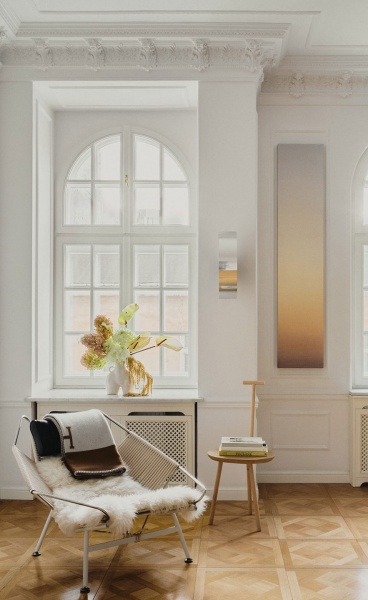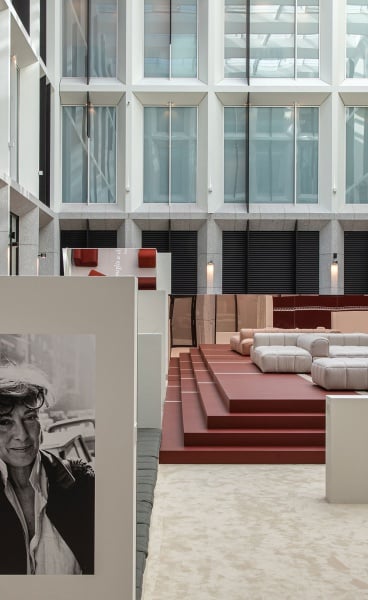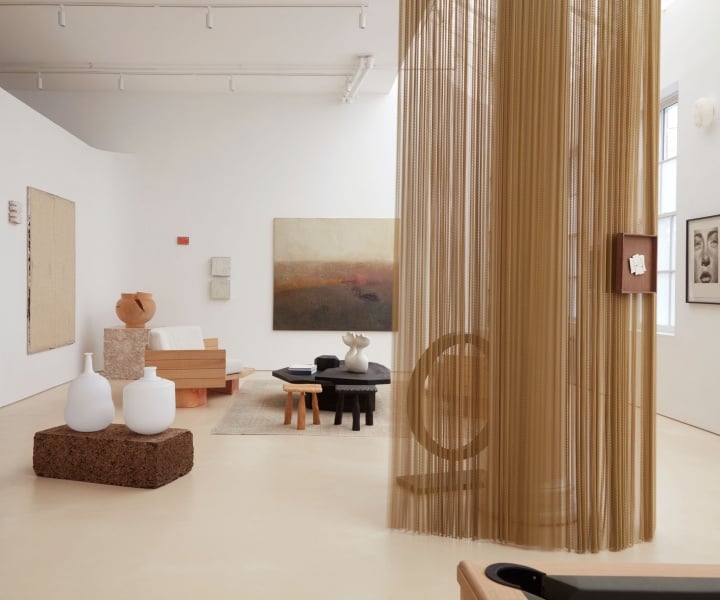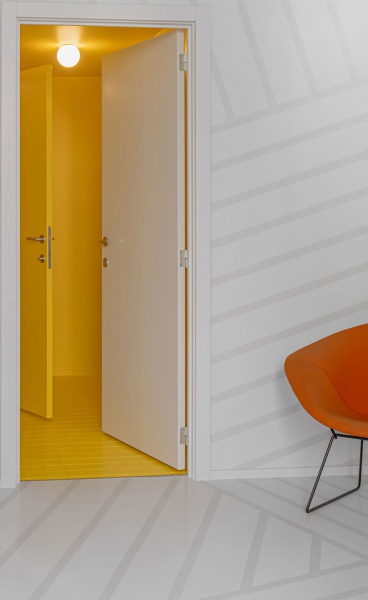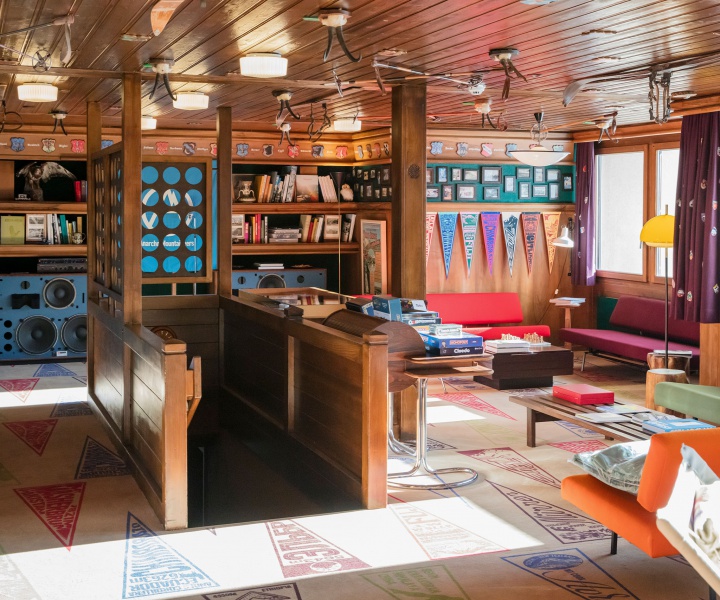Title
Studio Job: MAD HOUSEPosted In
Art, ExhibitionDuration
22 March 2016 to 21 August 2016Venue
Museum of Arts and Design (MAD)Opening Hours
Tuesday to Sunday 10.00 - 18.00 / Thursday and Friday 10.00 - 21.00 / Monday ClosedLocation
Telephone
+1 212 299 7777| Detailed Information | |||||
|---|---|---|---|---|---|
| Title | Studio Job: MAD HOUSE | Posted In | Art, Exhibition | Duration | 22 March 2016 to 21 August 2016 |
| Venue | Museum of Arts and Design (MAD) | Opening Hours | Tuesday to Sunday 10.00 - 18.00 / Thursday and Friday 10.00 - 21.00 / Monday Closed | Location |
2 Columbus Circle New York City, NY 10019
United States |
| Telephone | +1 212 299 7777 | [email protected] | Visit Website | ||
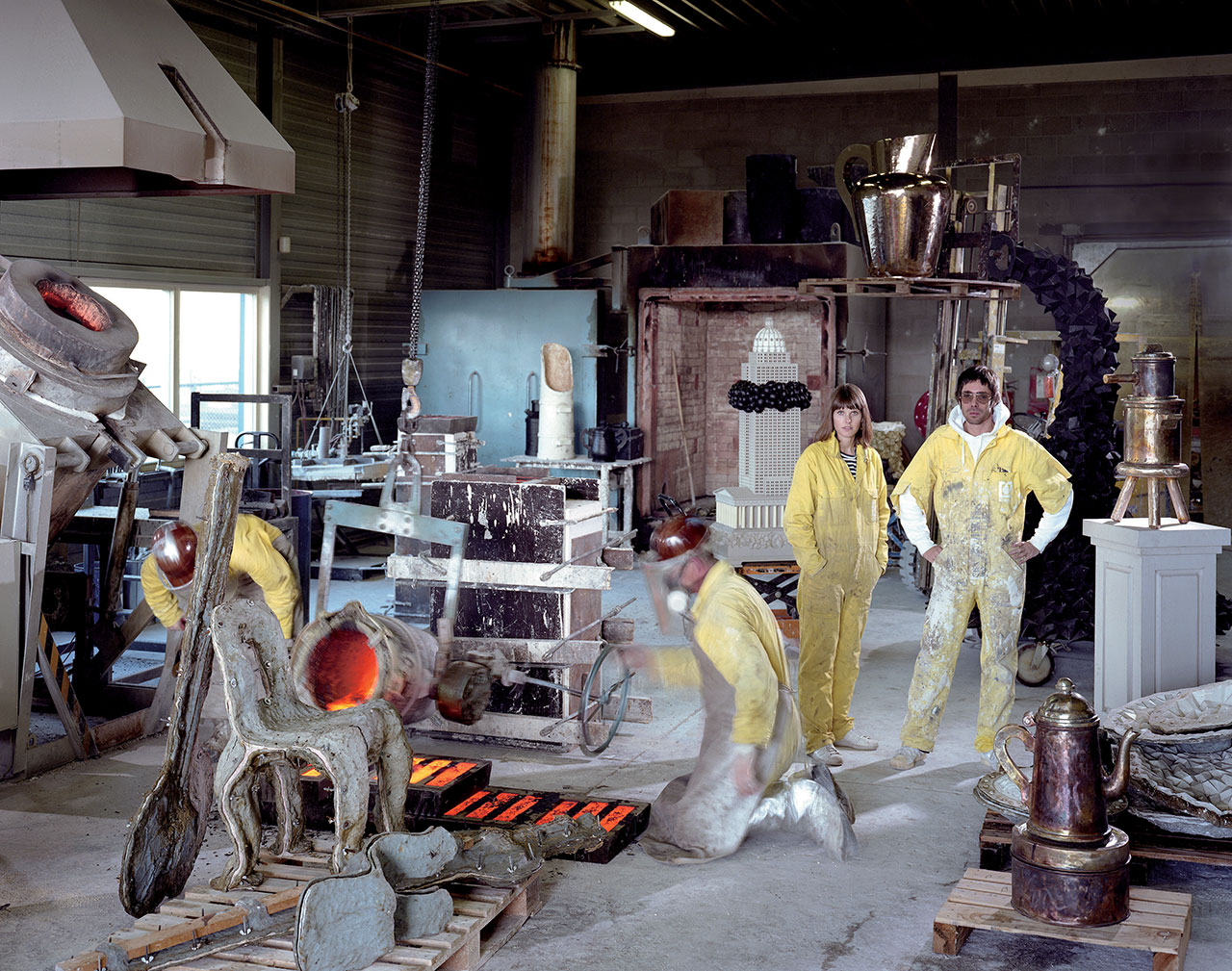
Job Smeets and Nynke Tynagel in foundry. Photo by Daniel Stier.

AUTOMOBILE, 2012-2013, 500 x 290 x 270 cm, Carpenters Workshop Gallery. Photo by Zero40.
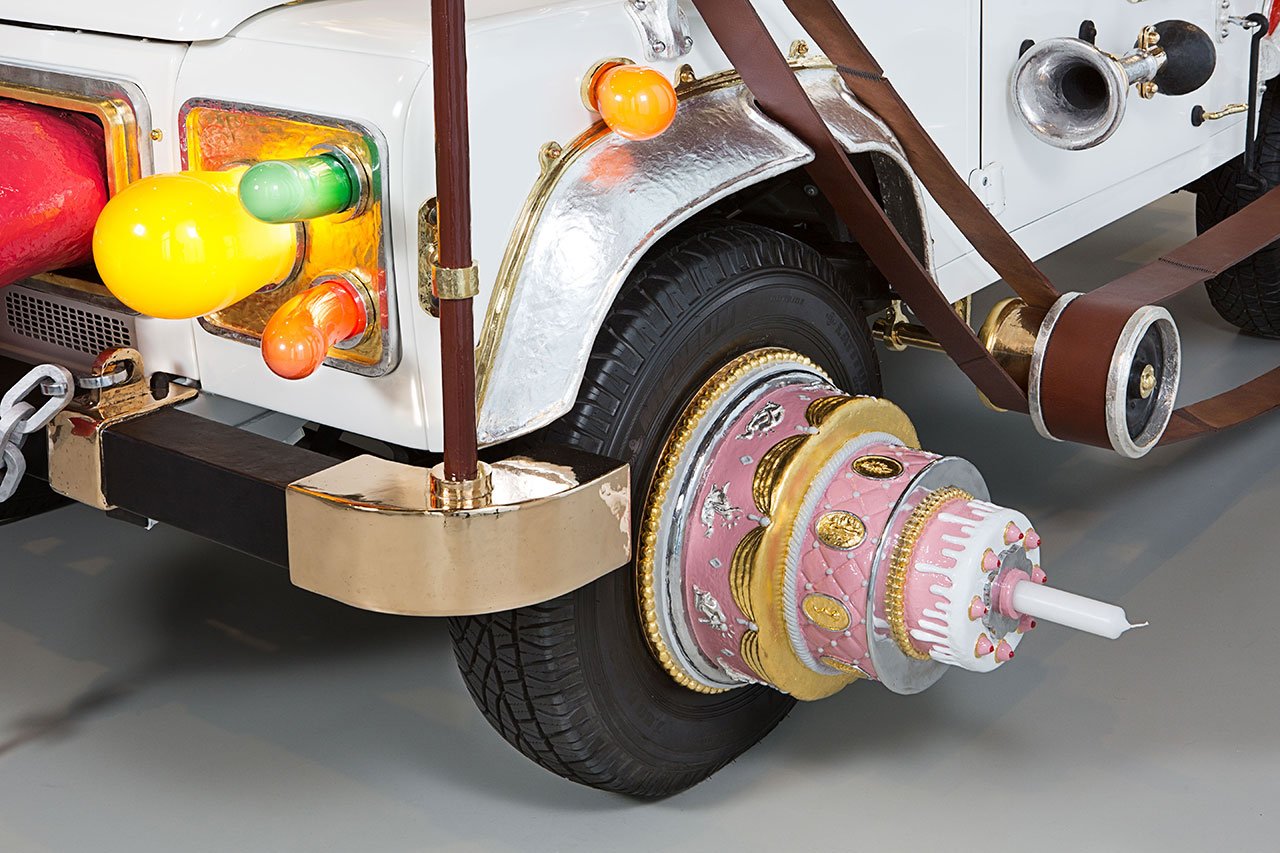
AUTOMOBILE (detail), 2012-2013, 500 x 290 x 270 cm, Carpenters Workshop Gallery. Photo by Zero40.

TABLE from Bavaria series, 2008. Collection of Michael Maharam. Photo by Robert Kot.
Modeled on the paradigm of an Old Master artist studio and inspired by the decorative arts of the 15th to 18th centuries, the studio’s works are comprised of a wide range of media like bronze casting, gilding, marquetry, stained glass and tin-glazed pottery. By using such traditional applied-art practices both in unexpected combinations and for unconventional forms, Studio Job has developed a highly distinctive body of work characterized by opulence, provocation and humor. Smeets calls their style “New Gothic” and defines it as antithetical to modern designers’ obsession with minimalism which he considers “the worst kitsch you can get”. Their work, predominantly produced in limited edition pieces—neither succumbing to the mass production demands of modern design, nor disavowing their product design nature for one-off pieces—intentionally defies the modernist mantra of “form follows function”, instead preferring decorative excess, visual turmoil and elaborate symbolism thereby blurring the lines between fine art and design.
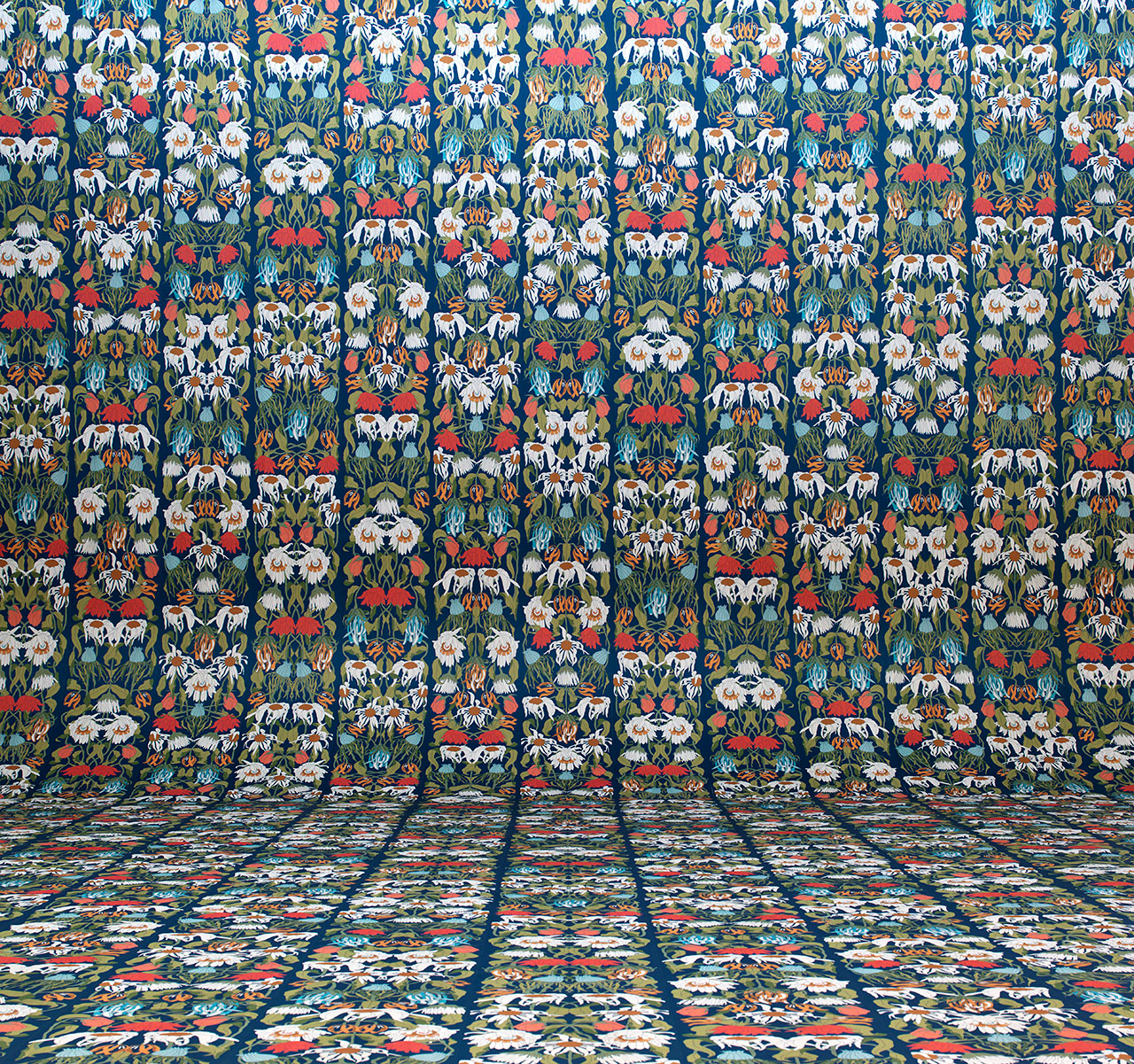
WITHERED FLOWERS from Archives series, 2014, Wallpaper, Made by NLXL. Courtesy of NLXL.
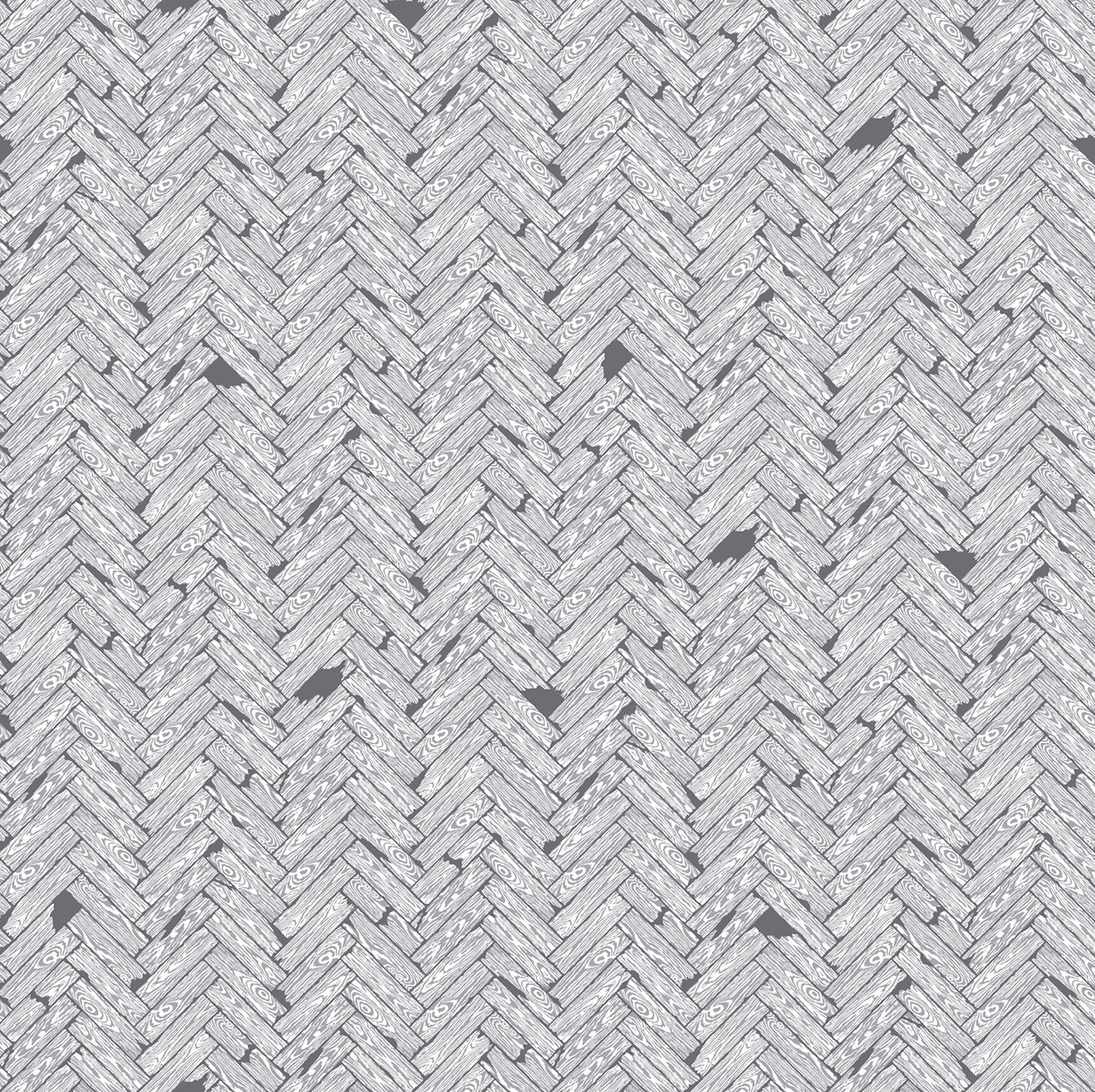
FLOOR, 2013, Vinyl, Made by Exposize,
Courtesy of Exposize.
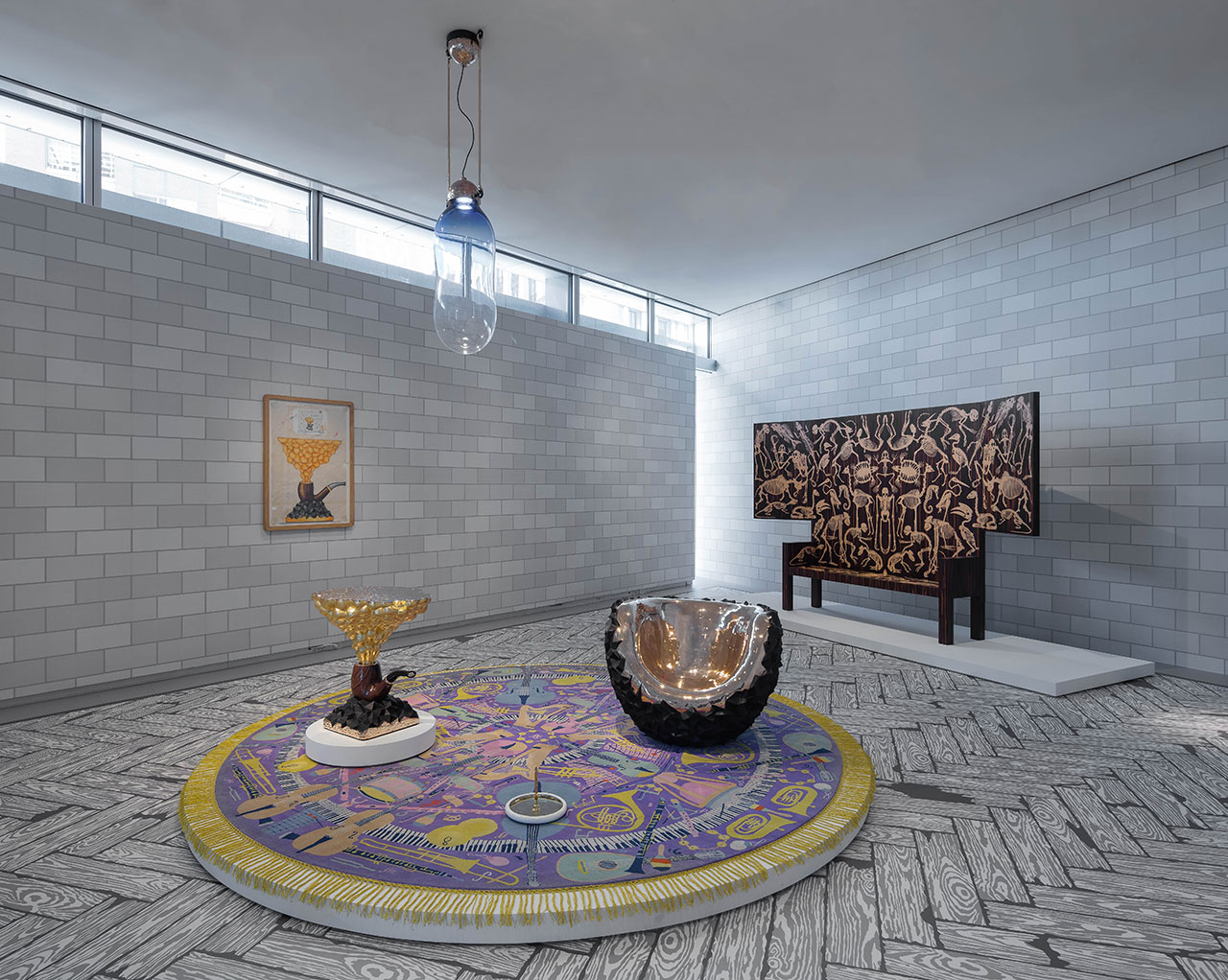
Studio Job MAD HOUSE Exhibition view. Photo by Butcher Walsh. Courtesy Museum of Arts and Design (MAD).
The designers’ emotional rather than utilitarian approach to design is also apparent in the exhibition’s set up. Eschewing chronological order, they have arranged their work in fluid, sometimes contradictory groupings around themes such as ‘love/lust,’ ‘agrarian/preindustrial’, and ‘church/religion’ that suggest narratives the visitors can pick upon to construct their own interpretations. Furthermore, by covering the floors and walls throughout the spaces in their own designs—weathered oak parquet harking back to the residences of the haute bourgeoisie and a wallpaper inspired by typical castle interiors—they have managed to conceptually transform the galleries into the private treasure chambers of a fantastical collector of yore.
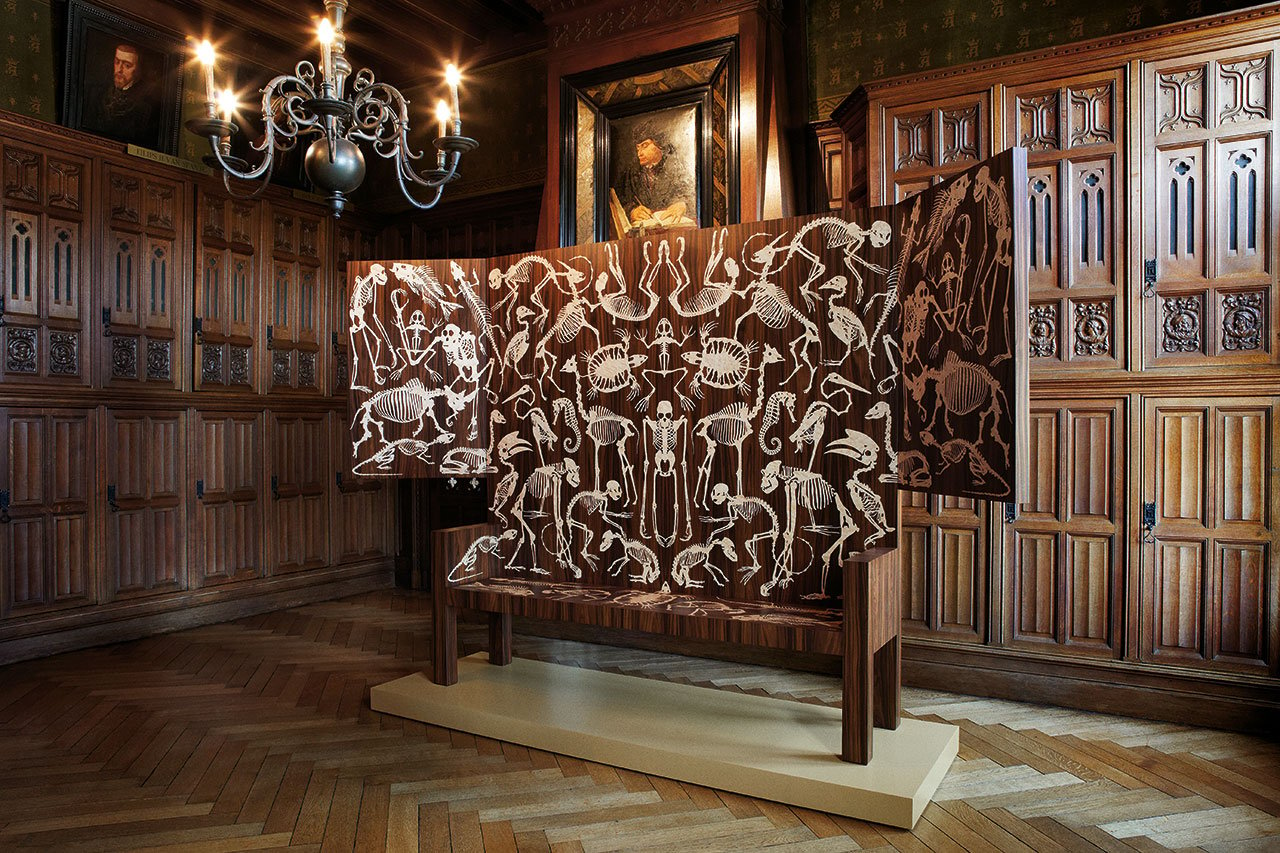
BENCH from Perished series, 2006. Indian rosewood, bird’s eye maple, brass. Collection of Mike De Paola. Photo by Robert Kot.
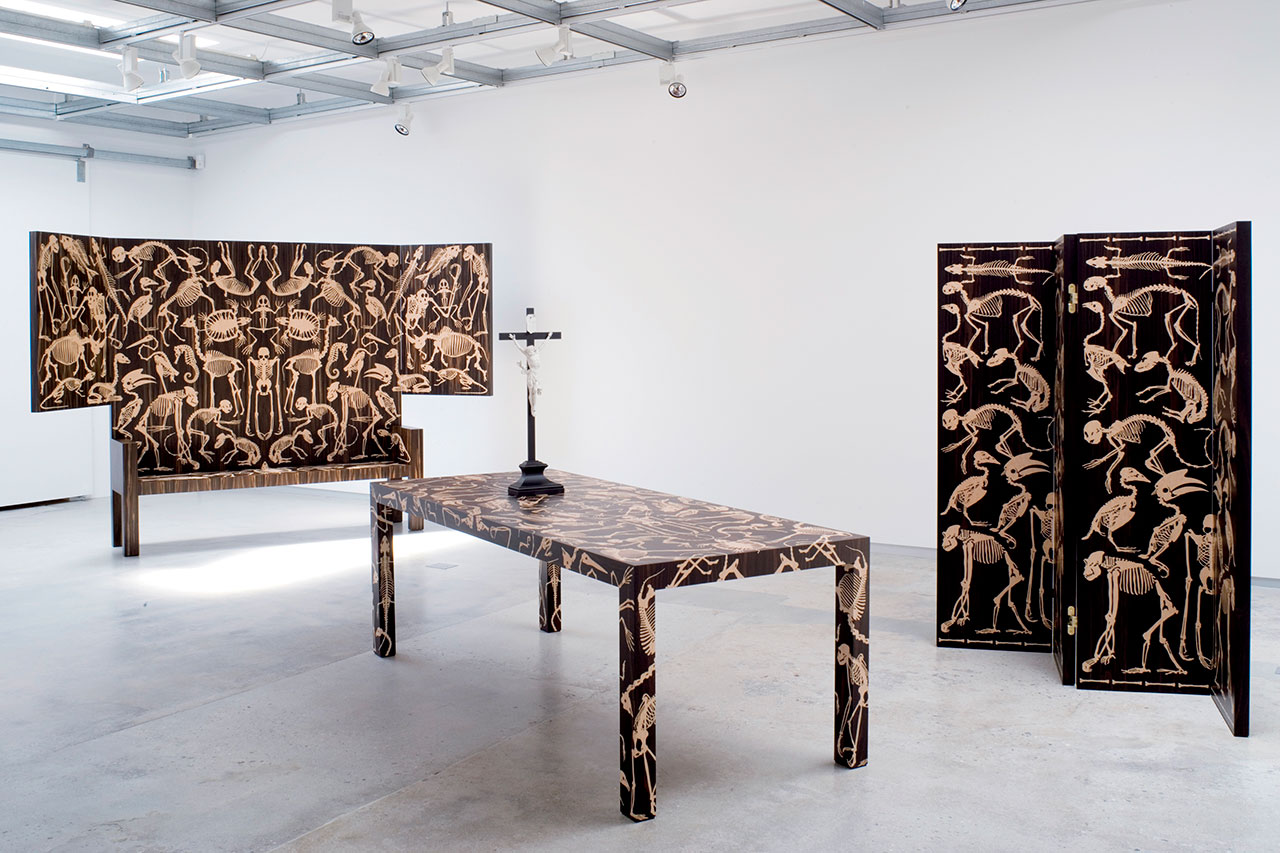
Perished Collection (Bench, Table and Screen), 2006. Hand-crafted Furniture in Macassar Ebony Wood With Laser-cut Bird’s Eye Maple Inlays © Moss.
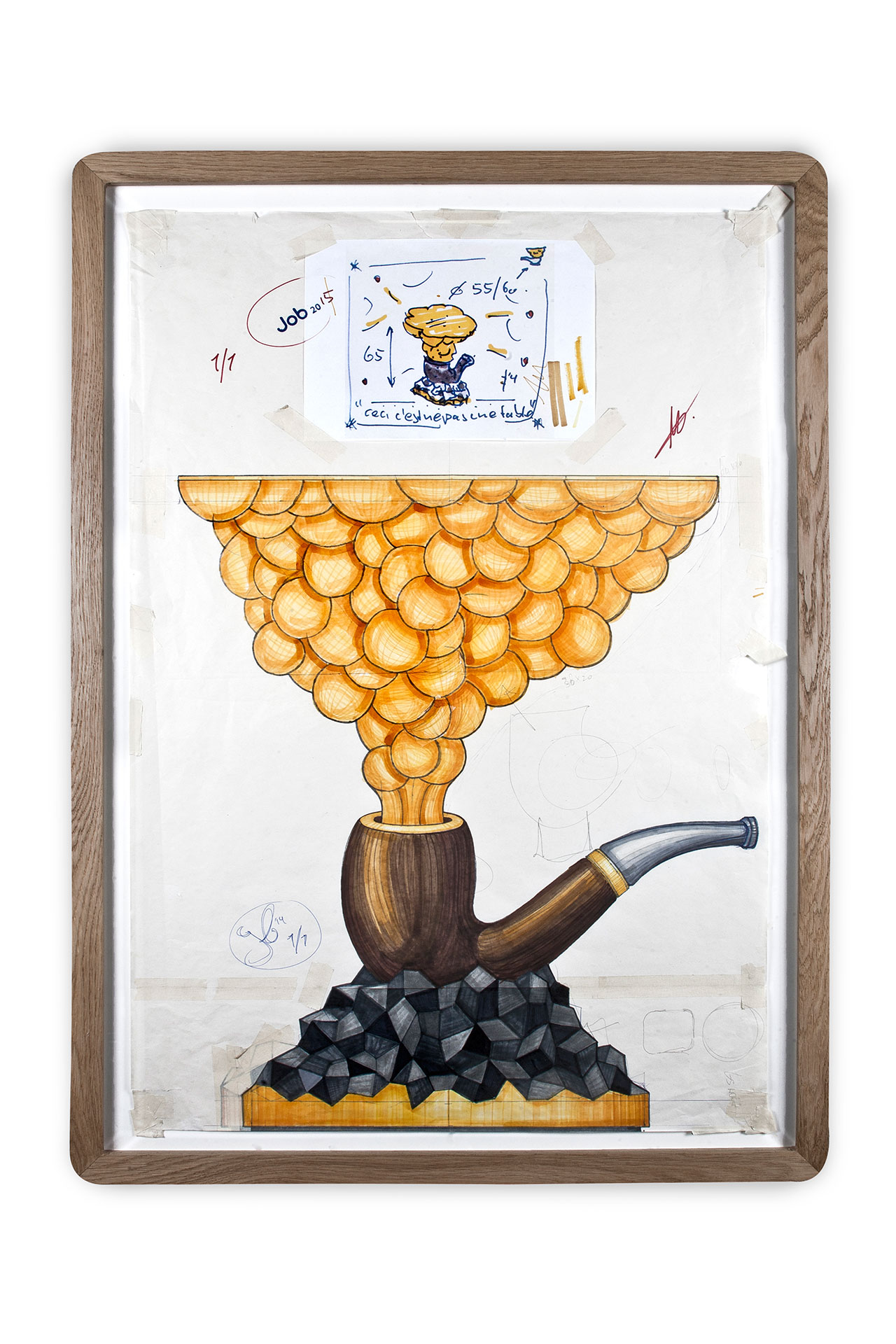
PIPE, 2015. Paper, ink, frame, glass. Courtesy of S. Hannecart. Photo by Loek Blonk.
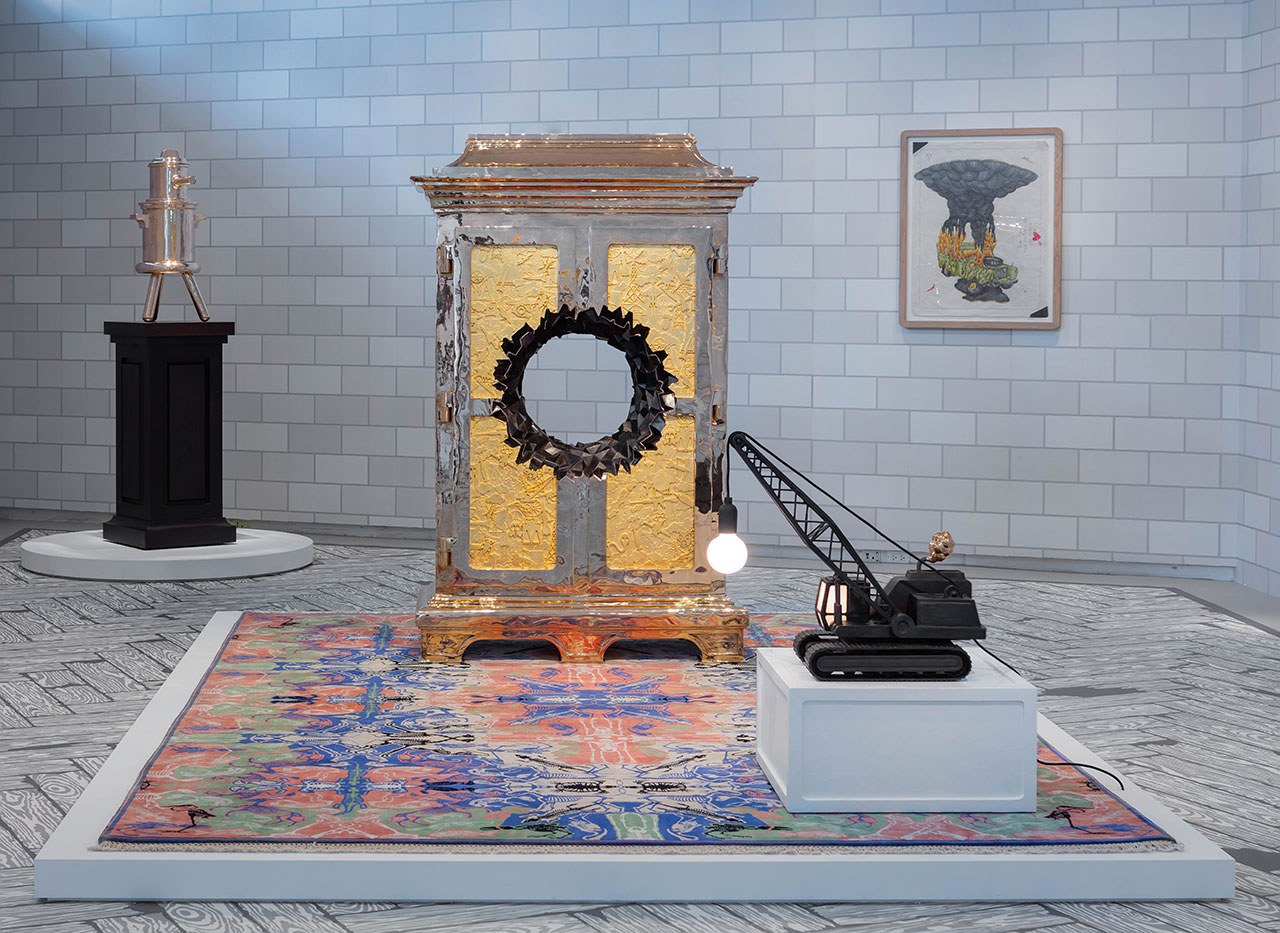
Studio Job MAD HOUSE Exhibition view. Photo by Butcher Walsh. Courtesy Museum of Arts and Design (MAD).
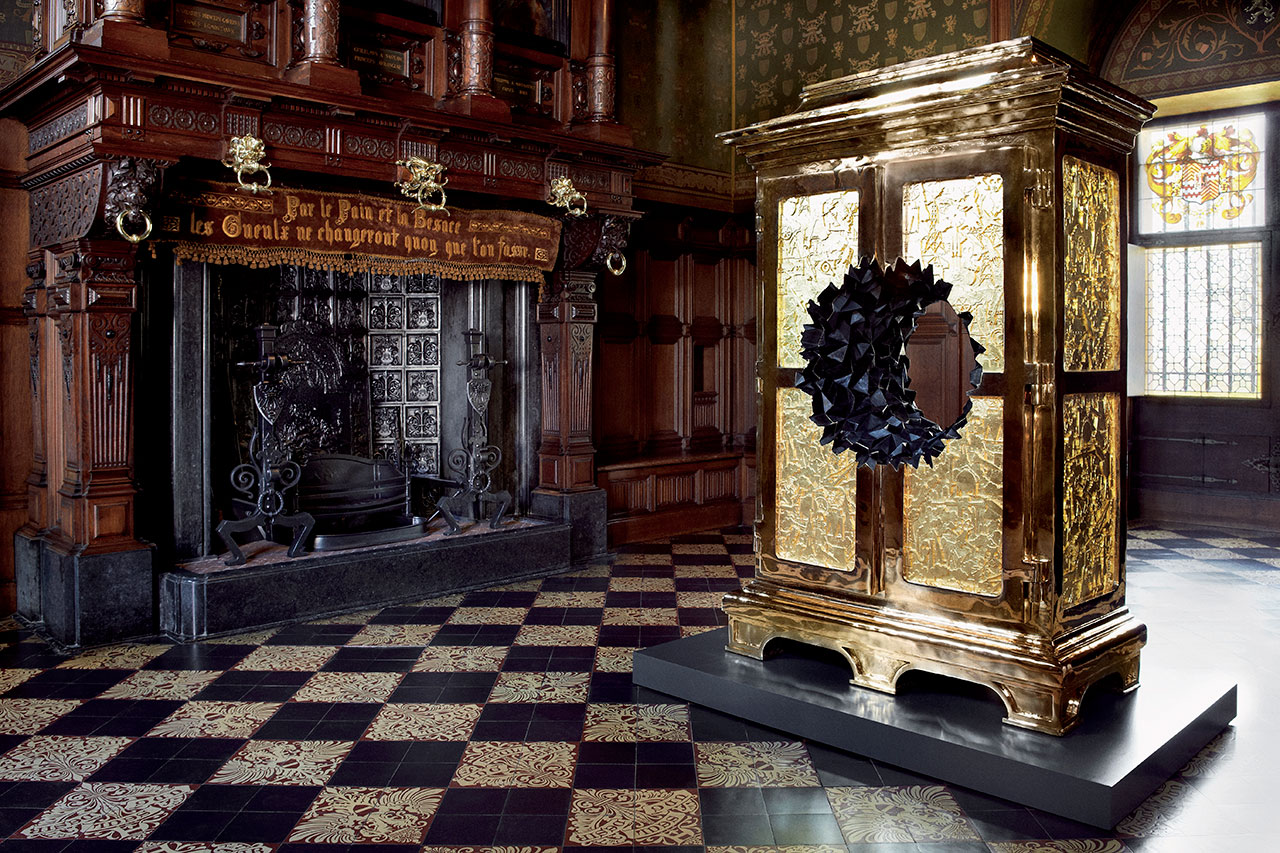
CABINET from Robber Baron series 2006–07. Polished and patinated bronze, 24-karat gilding. Installation view from Gaasbeek Castle. Photo by Robert Kot.
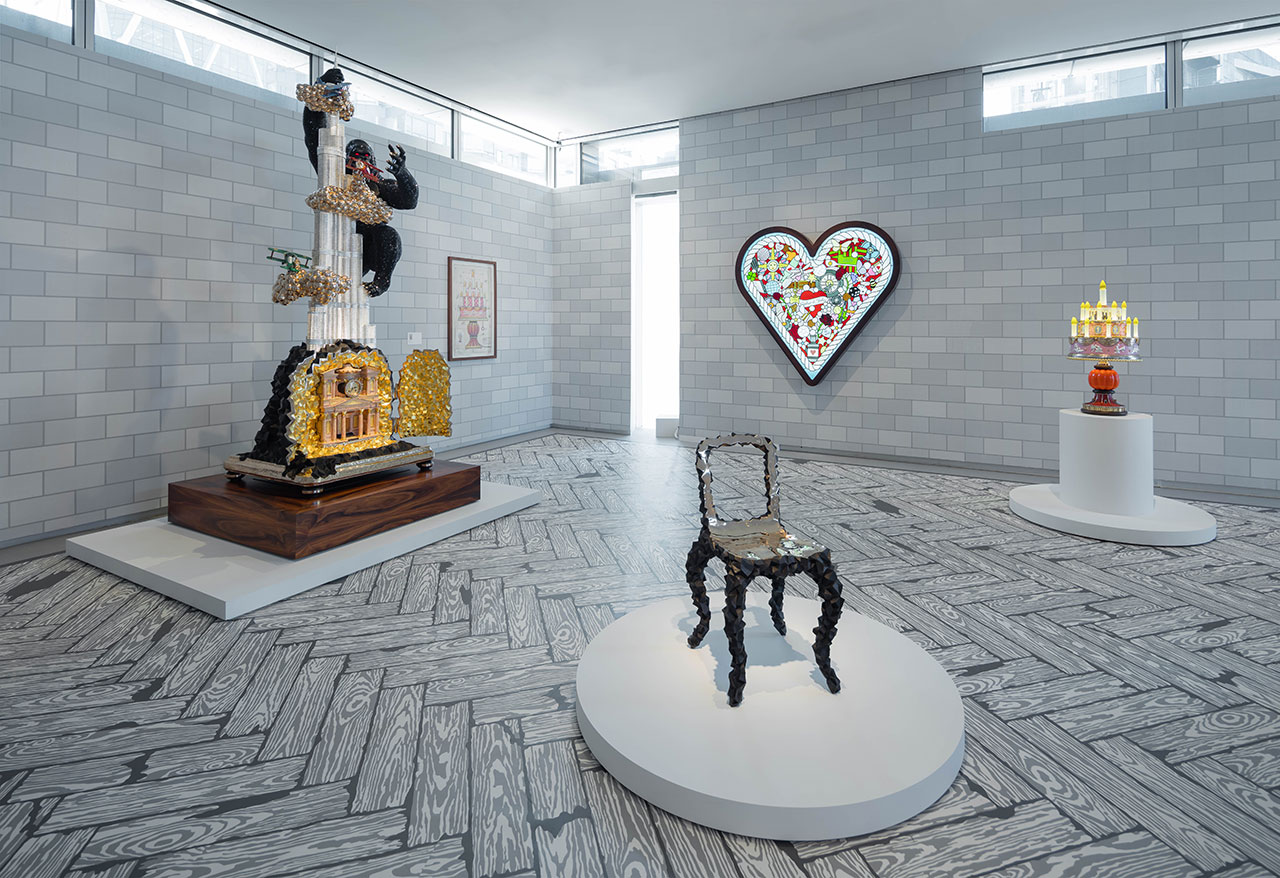
Studio Job MAD HOUSE Exhibition view. Photo by Butcher Walsh. Courtesy Museum of Arts and Design (MAD).
One of the first and most spectacular pieces visitors encounter is “Burj Khalifa” (2013-14), a 3.5 meter silver-leafed depiction of the famous Dubai skyscraper standing atop a cast-bronze model of Al Khazneh, the Greek-style temple at Petra in Jordan, which features a functioning mechanical clock, while a cast-bronze King Kong, covered with 120,000 Swarovski crystals, attempts to reach the top. The piece encapsulates Studio Job’s distinctive attributes, i.e. over-the-top design, an extravagance of materials and conceptual playfulness while also exemplifying the designers’ clever use of iconography, in this case by juxtaposing Middle Eastern old and new symbols and raising questions about who the beast represents—Terrorism? The Arab Spring? Our collective id?
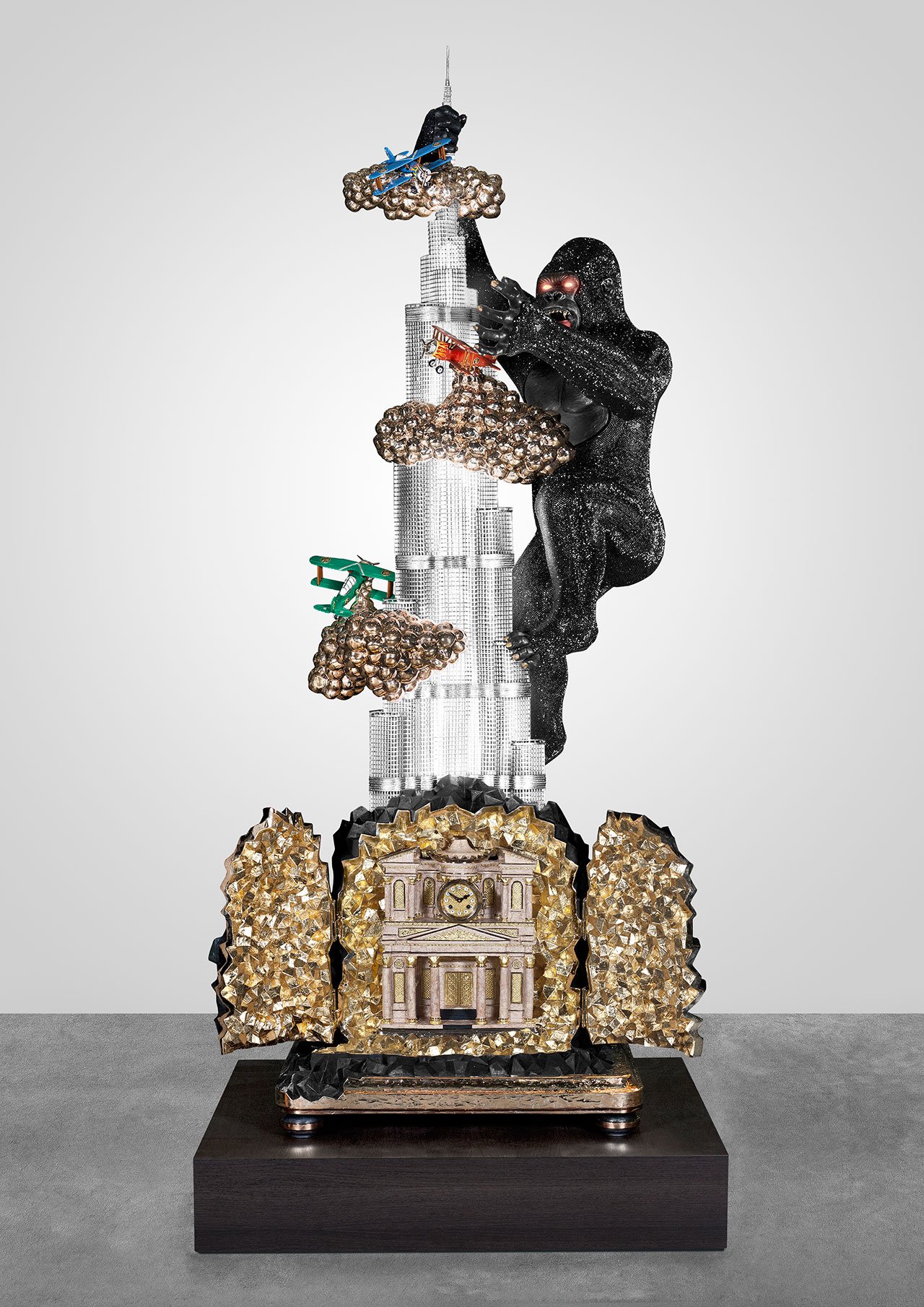
BURJ KHALIFA from Landmark series, 2013–14. Polished and patinated bronze, aluminum, 24-karat gilding, silver leaf, Swarovski crystals, mechanical clockwork, faux marble, paint, handblown glass, LED light fittings, electric motors. Courtesy of Carpenters Workshop Gallery. Photo by Loek Blonk.

HEART, 2012–13. Stained and enameled handblown glass, patinated lead, Indian rosewood, neon light fittings. Private collection. Photo by Loek Blonk.
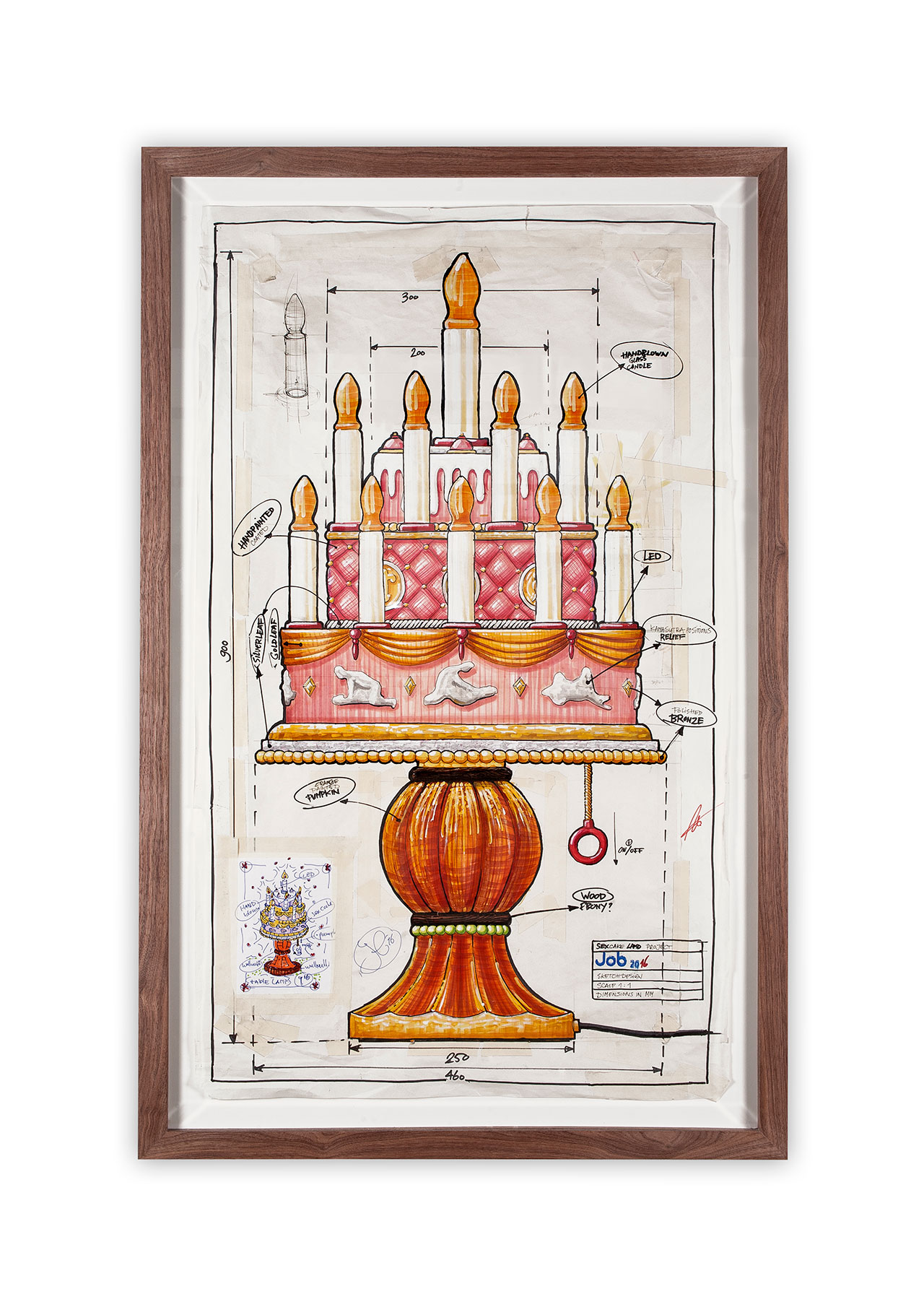
SEX CAKE, 2015–16, Paper, ink, frame, glass. Courtesy of Studio Job Gallery. Photo by Loek Blonk.
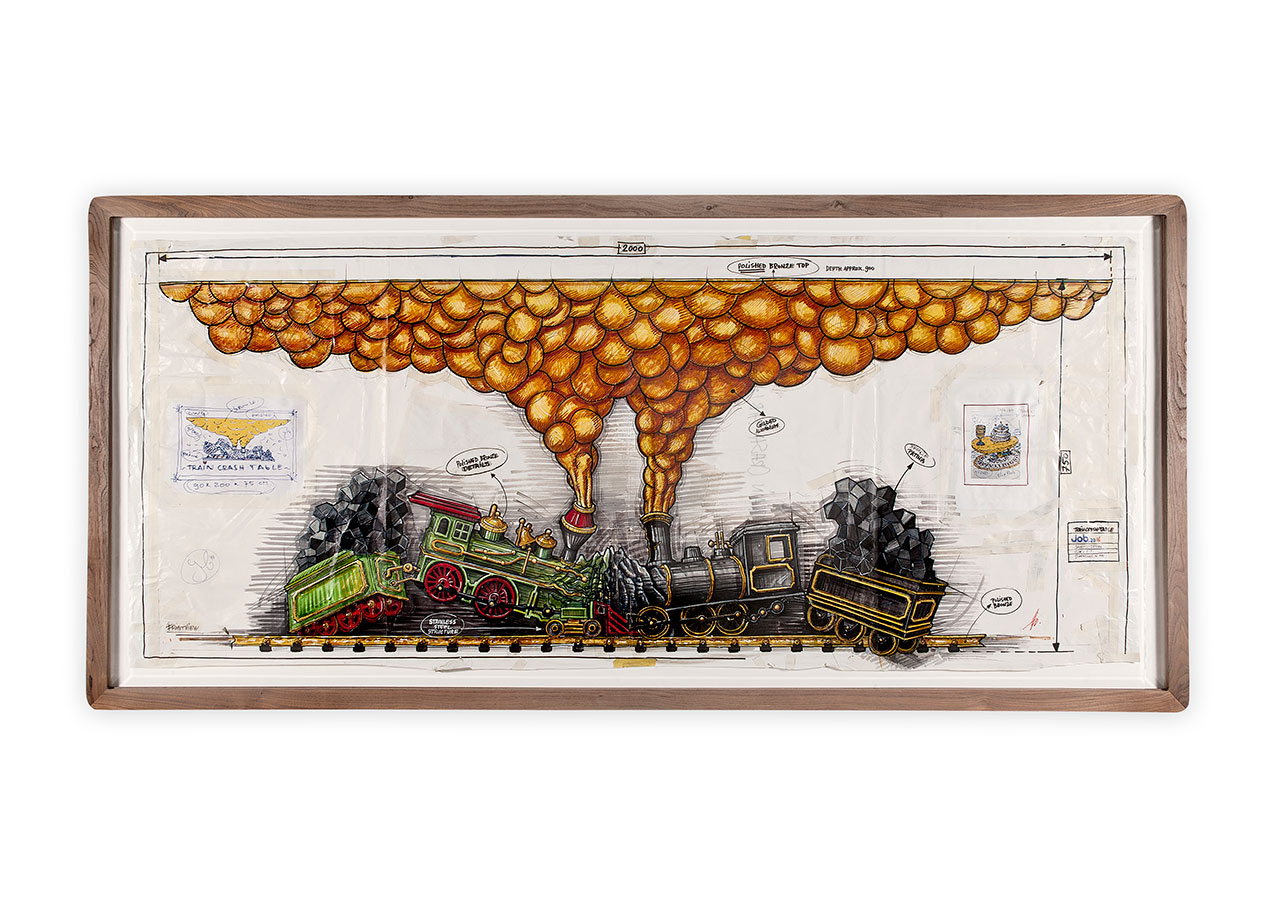
TRAIN CRASH, 2015–16. Paper, ink, frame, glass. Courtesy of Studio Job Gallery. Photo by Loek Blonk.
Similarly laden with a suggestive narrative as well as visual panache, “Train Crash” (2015) depicts two cast-bronze locomotives colliding head-on, producing gilded clouds of billowing smoke that create a tabletop. The unveiling of the piece in June of 2015 was followed by Smeets and Tynagel’s announcement that their romantic relationship had come to an end. Thankfully the creative partnership was unaffected and the sculpture is a fitting tribute to their complementing creative energies underpinning the design process.
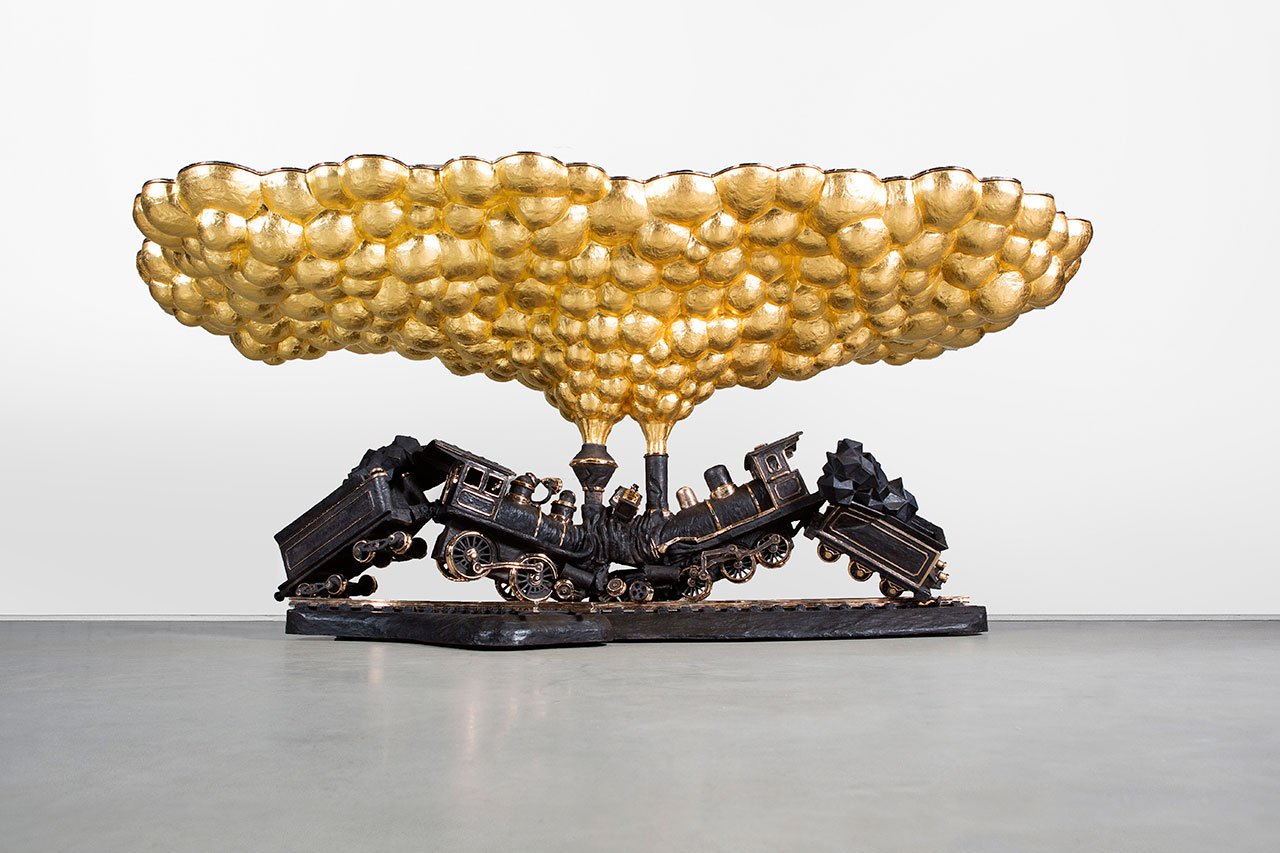
TRAIN CRASH, 2015. Polished and patinated bronze, aluminum, 24-karat gilding. Courtesy of Carpenters Workshop Gallery.
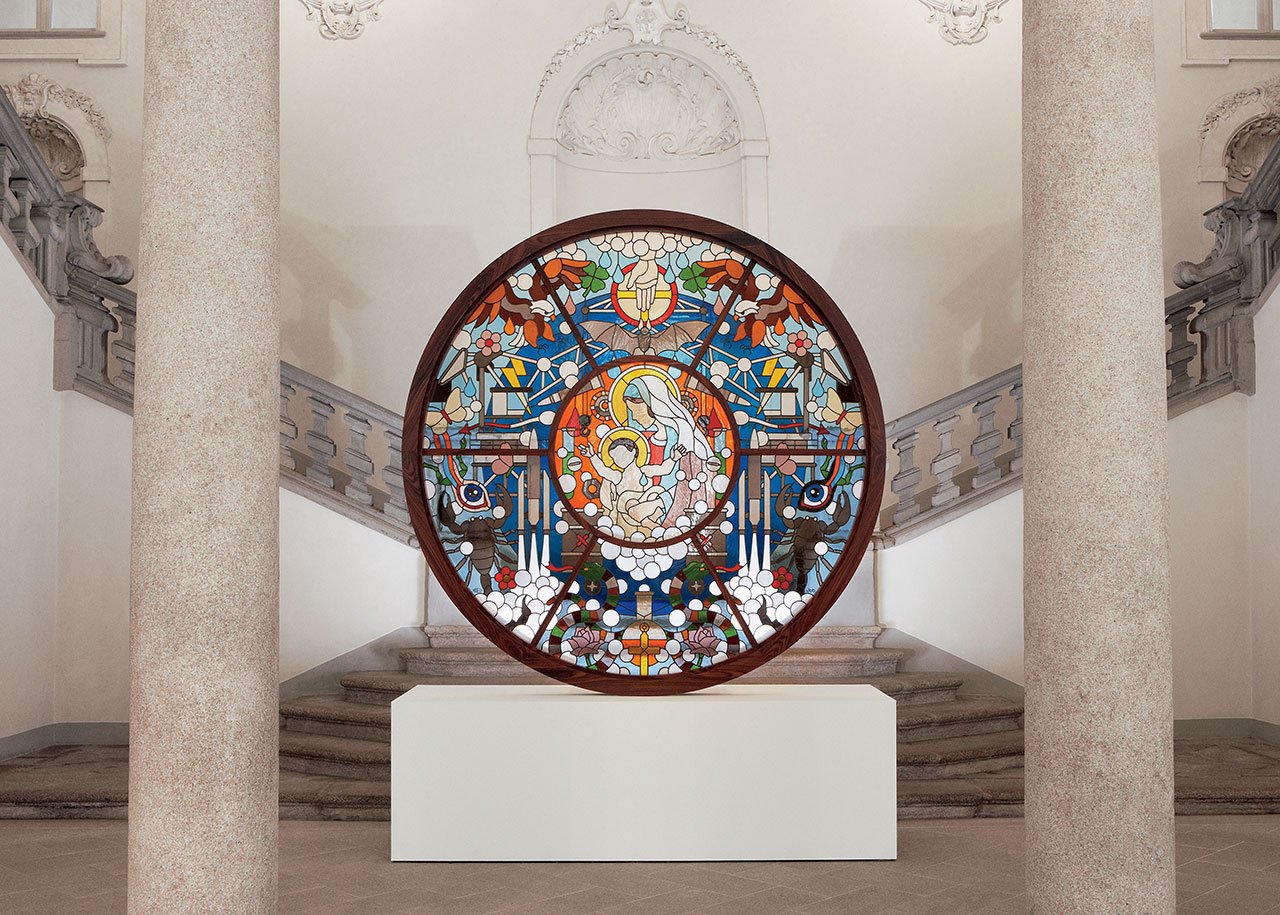
THE BIRTH from Gospel series, 2009. Stained and enameled handblown glass, patinated lead, Indian rosewood, halogen light fittings. Courtesy of Carpenters Workshop Gallery. Photo by Robert Kot.
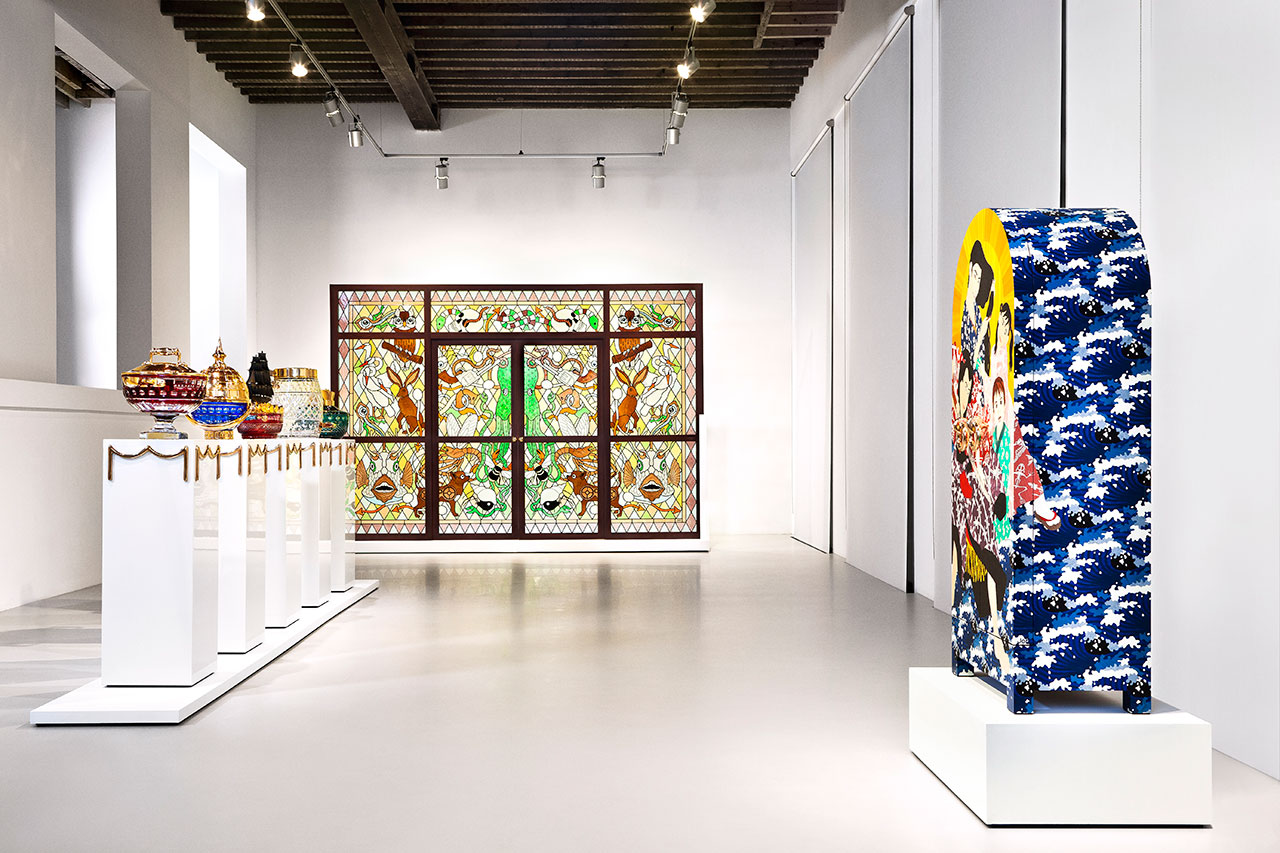
Studio Job Gallery View. Photo by Robert Kot.
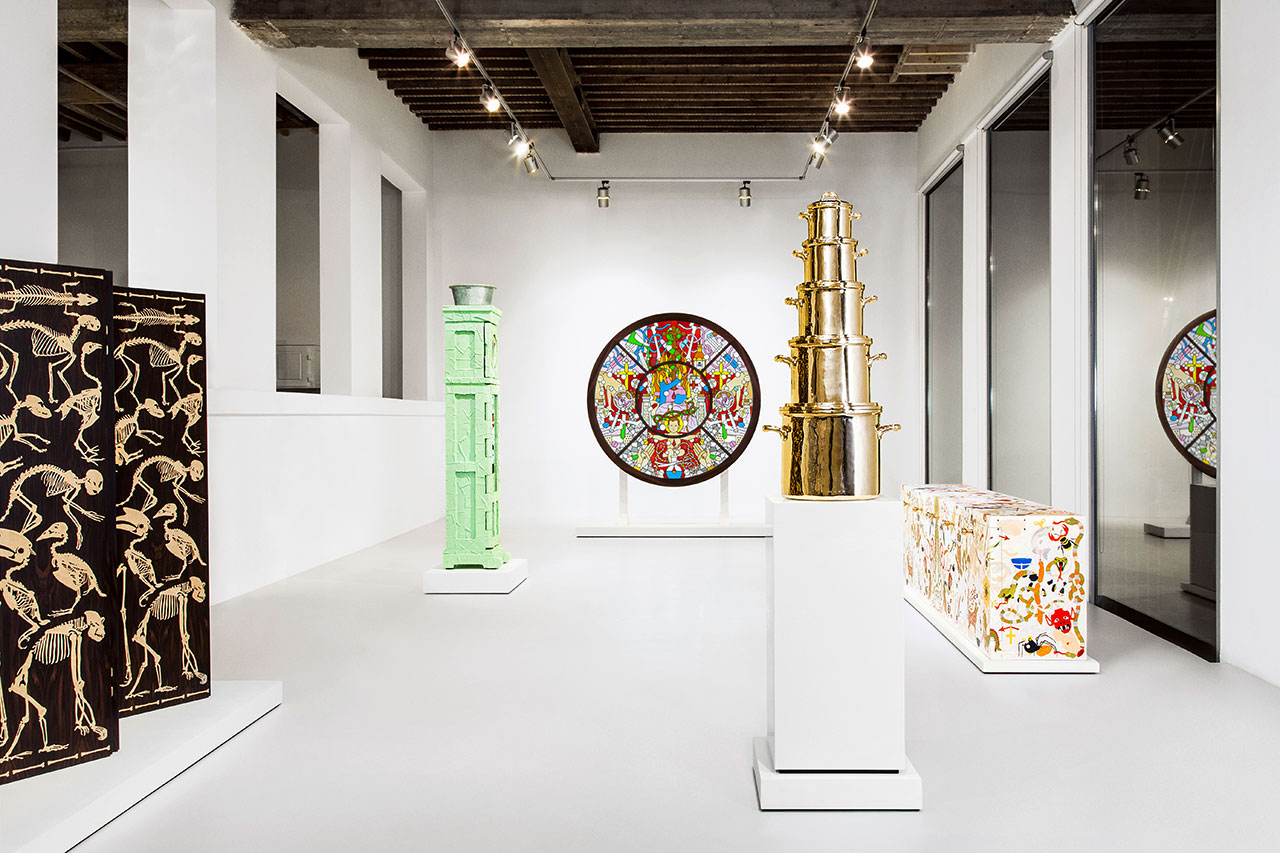
Studio Job Gallery View. Photo by Robert Kot.
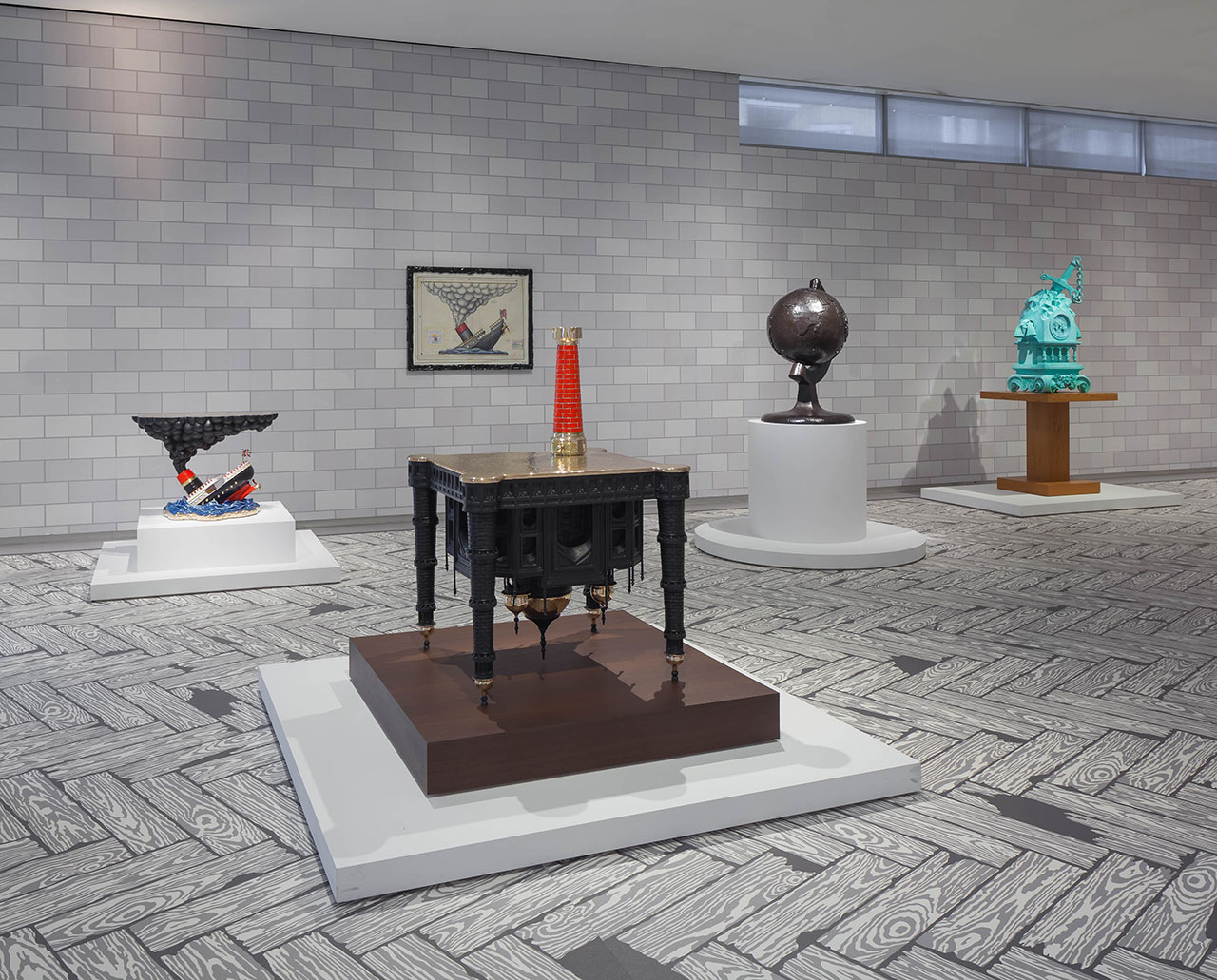
Studio Job MAD HOUSE Exhibition view. Photo by Butcher Walsh. Courtesy Museum of Arts and Design (MAD).
Other pieces eschew the monumental for the playful: “Chair” (2004) is a fossilized take on a Louis XV side chair, “Tour Eiffel” (2012) is a desk lamp depicting a droopy version of the famous landmark—both made out of polished and patinated bronze—and “Banana” (2015) features a series of cheeky light fixtures (featuring peeled skin made out of polished bronze while their illuminated flesh is created out of hand-blown glass) that pays homage to Andy Warhol. Studio Job’s tribute to artists they admire also includes Jeff Koons, incorporating a working vacuum cleaner in “Horse Bust (Chest Piece)” (2014) as a nod to Koons' frequent use of the appliance in the 80s, and René Magritte, whereby they have rendered his iconic pipe into a sculptural table, “Pipe” (2015).
To celebrate the exhibition, a new monograph, “Studio Job: Monkey Business”, will be published by Rizzoli and Carpenters Workshop Gallery, showcasing the studio’s work over the past five years through numerous photographs, renderings and sketches.
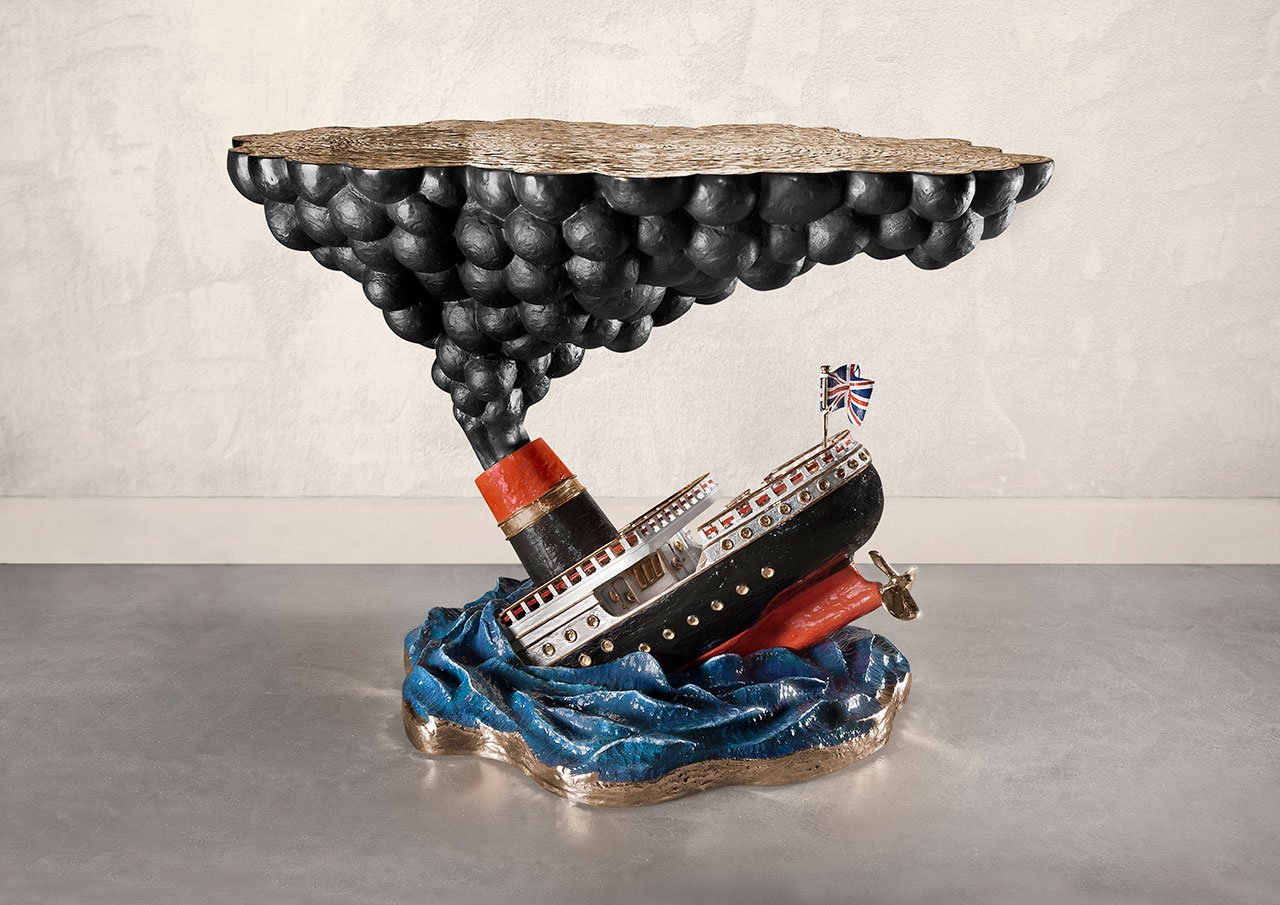
SINKING SHIP, 2016. Polished and patinated bronze, paint, 24-karat gilding. Courtesy of Chamber. Photo by Loek Blonk.
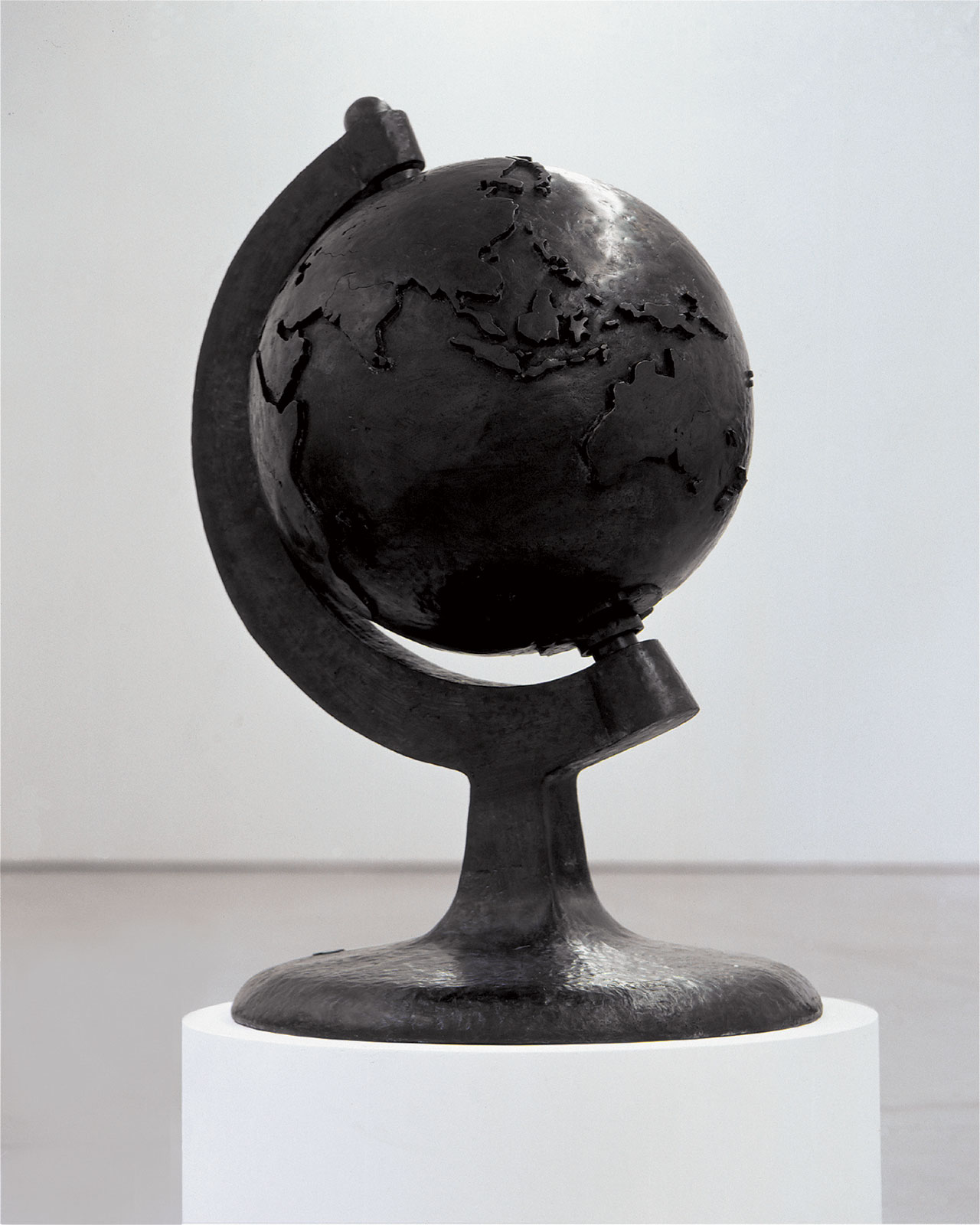
GLOBE from Post Craft series, 2002. Patinated bronze, mechanical parts. Courtesy of Groninger Museum.
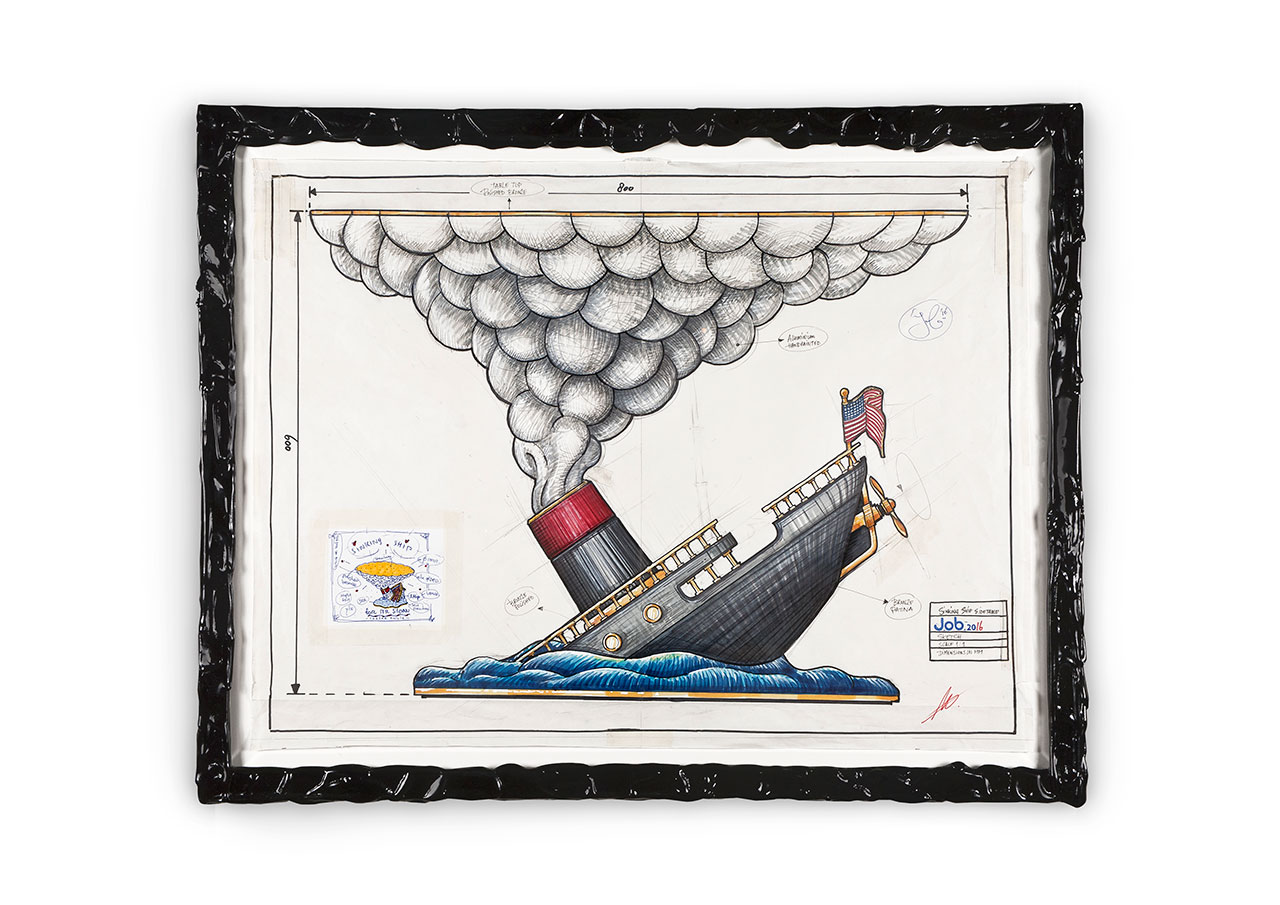
SINKING SHIP, 2015–16, Paper, ink, frame, glass. Courtesy of Studio Job Gallery. Photo by Loek Blonk.
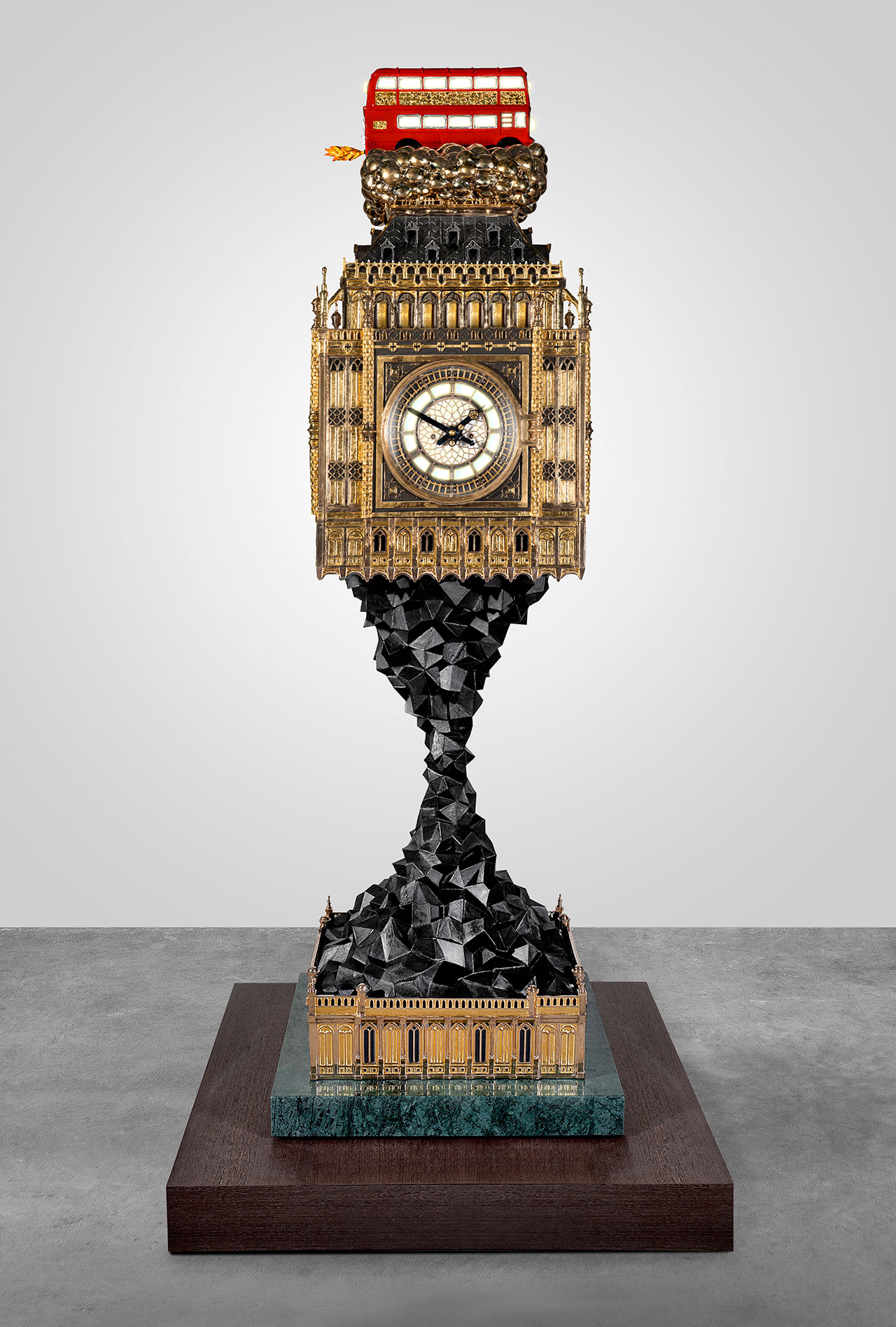
BIG BEN from Aftermath series, 2009–14. Polished and patinated bronze, aluminum, 24-karat gilding, paint, handblown glass, mechanical clockwork and gong, LED light fittings, steel, polished green Guatemalan marble, wenge. Courtesy of Richard and Marcia Mishaan. Photo by Loek Blonk.
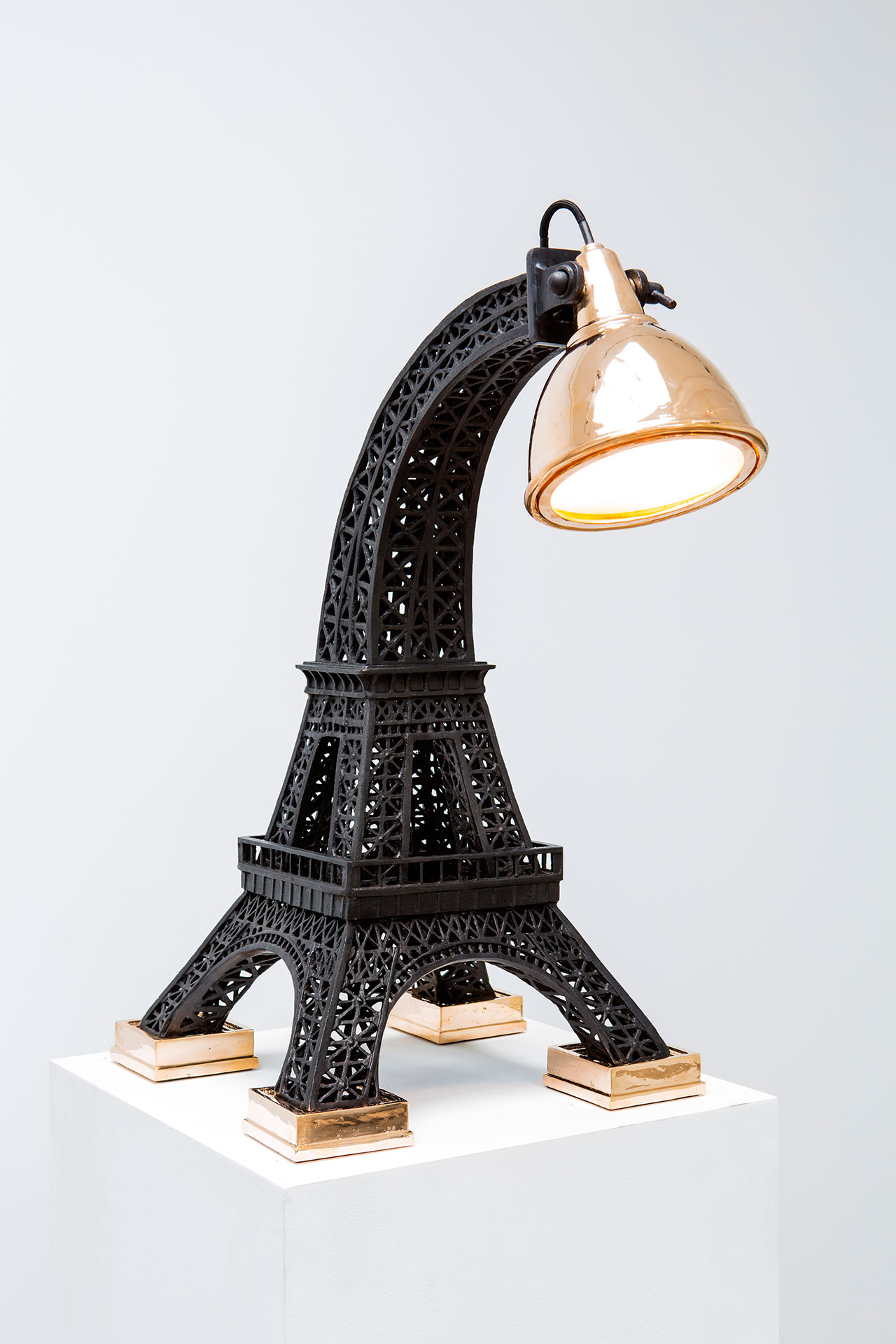
TOUR EIFFEL from Landmark series, 2012. Polished and patinated bronze, handblown glass, LED light fittings. Courtesy of Carpenters Workshop Gallery.
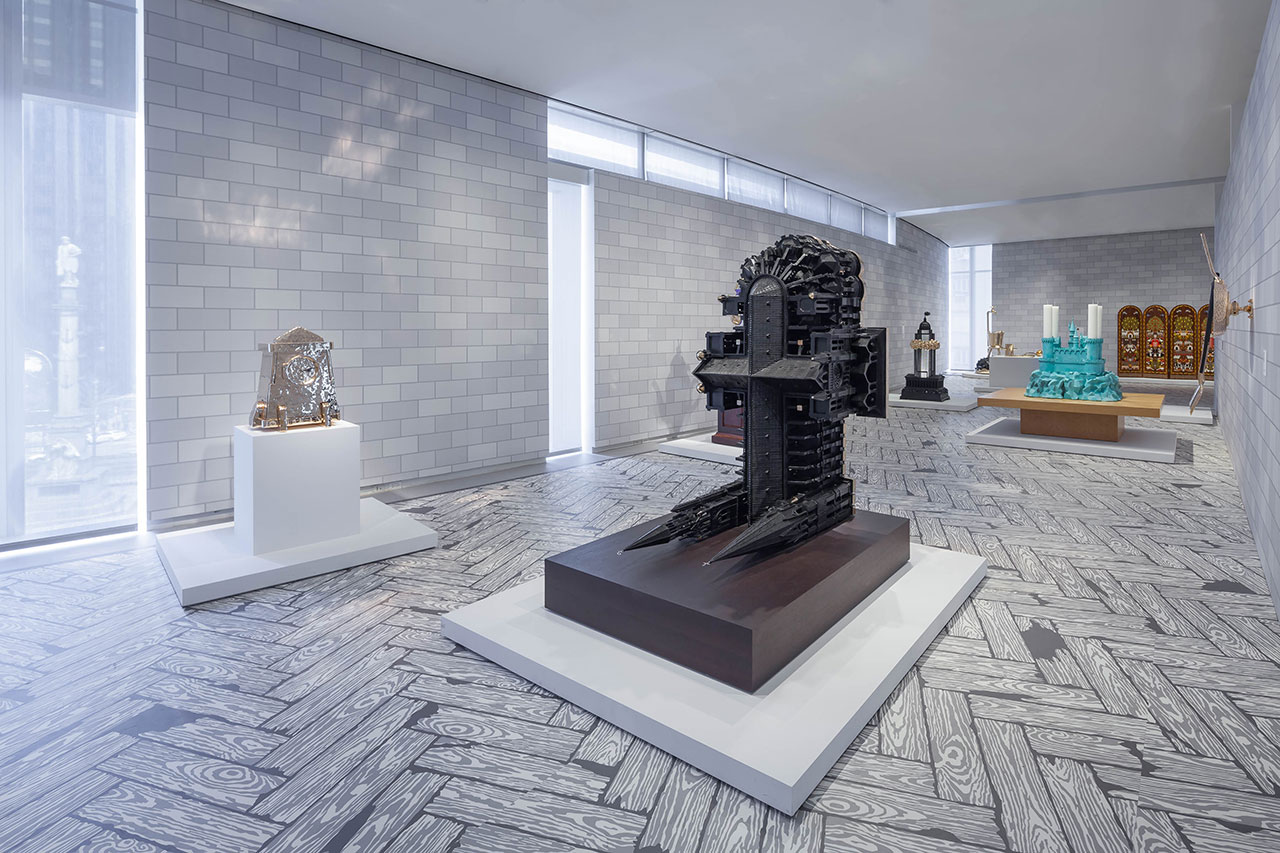
Studio Job MAD HOUSE Exhibition view. Photo by Butcher Walsh. Courtesy Museum of Arts and Design (MAD).
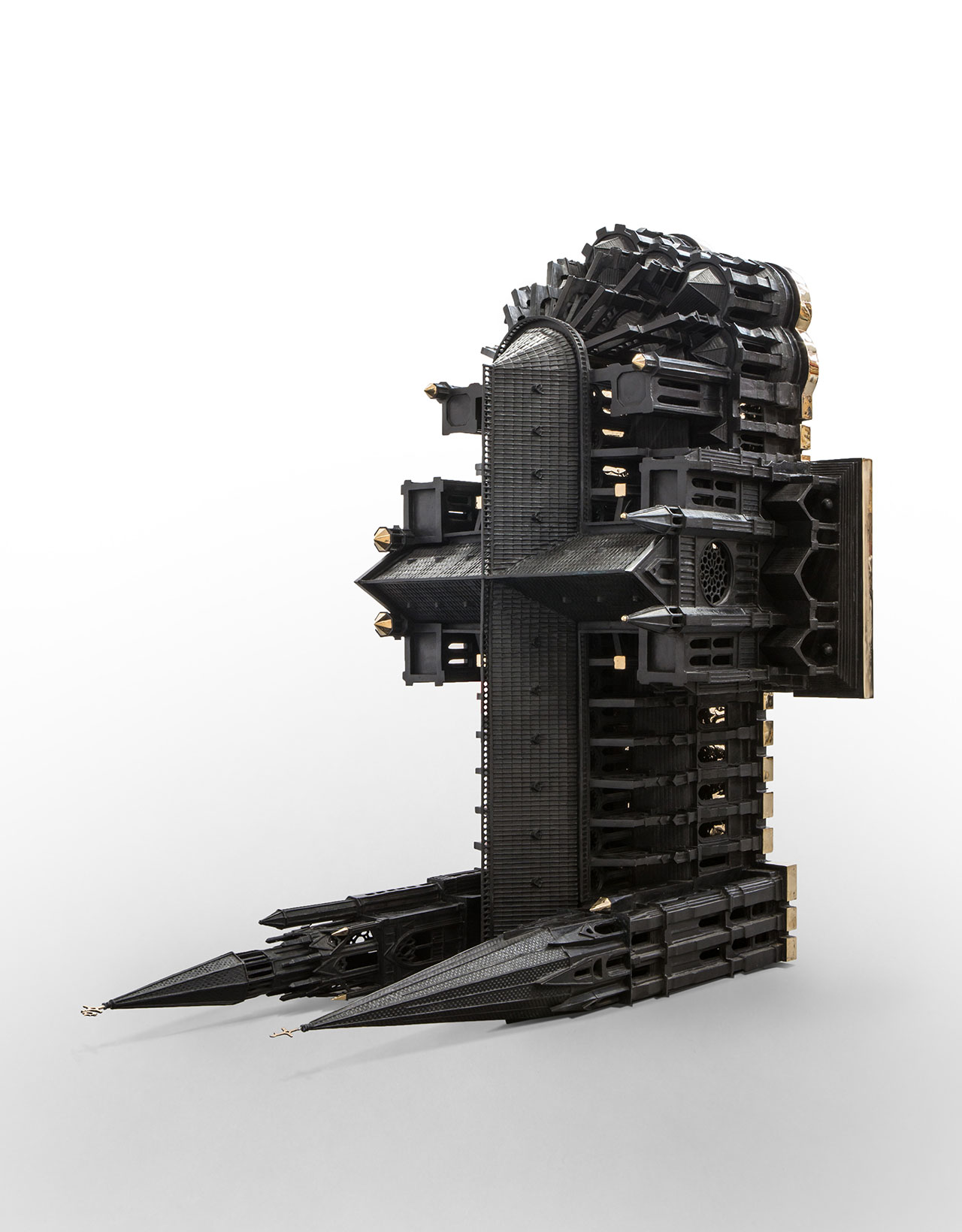
CHARTRES from Aftermath series, 2009–12. Polished and patinated bronze, 24-karat gilding. Courtesy of Carpenters Workshop Gallery.
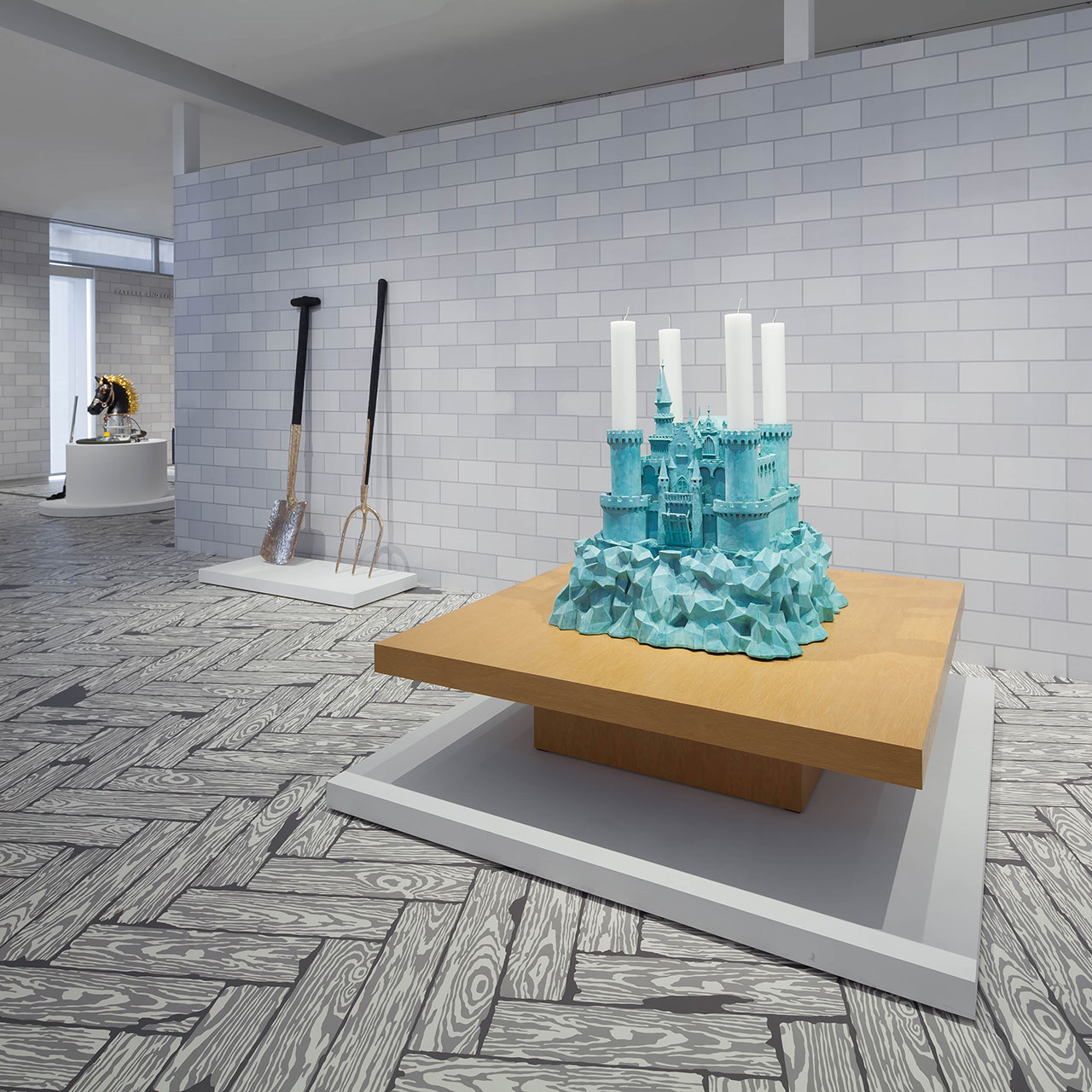
Studio Job MAD HOUSE Exhibition view. Photo by Butcher Walsh. Courtesy Museum of Arts and Design (MAD).
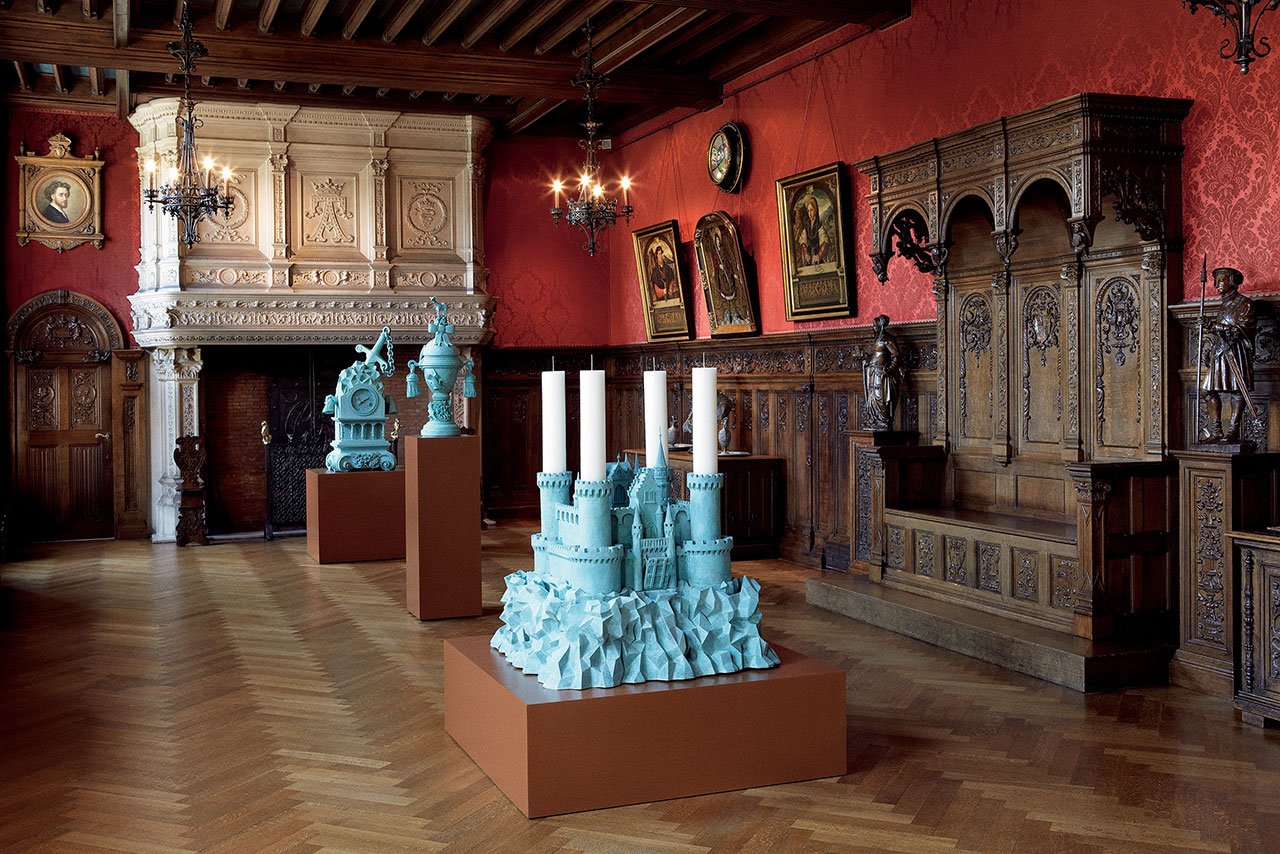
OXIDIZED (2002) Installation view from Gaasbeek Castle. Photo by Robert Kot.
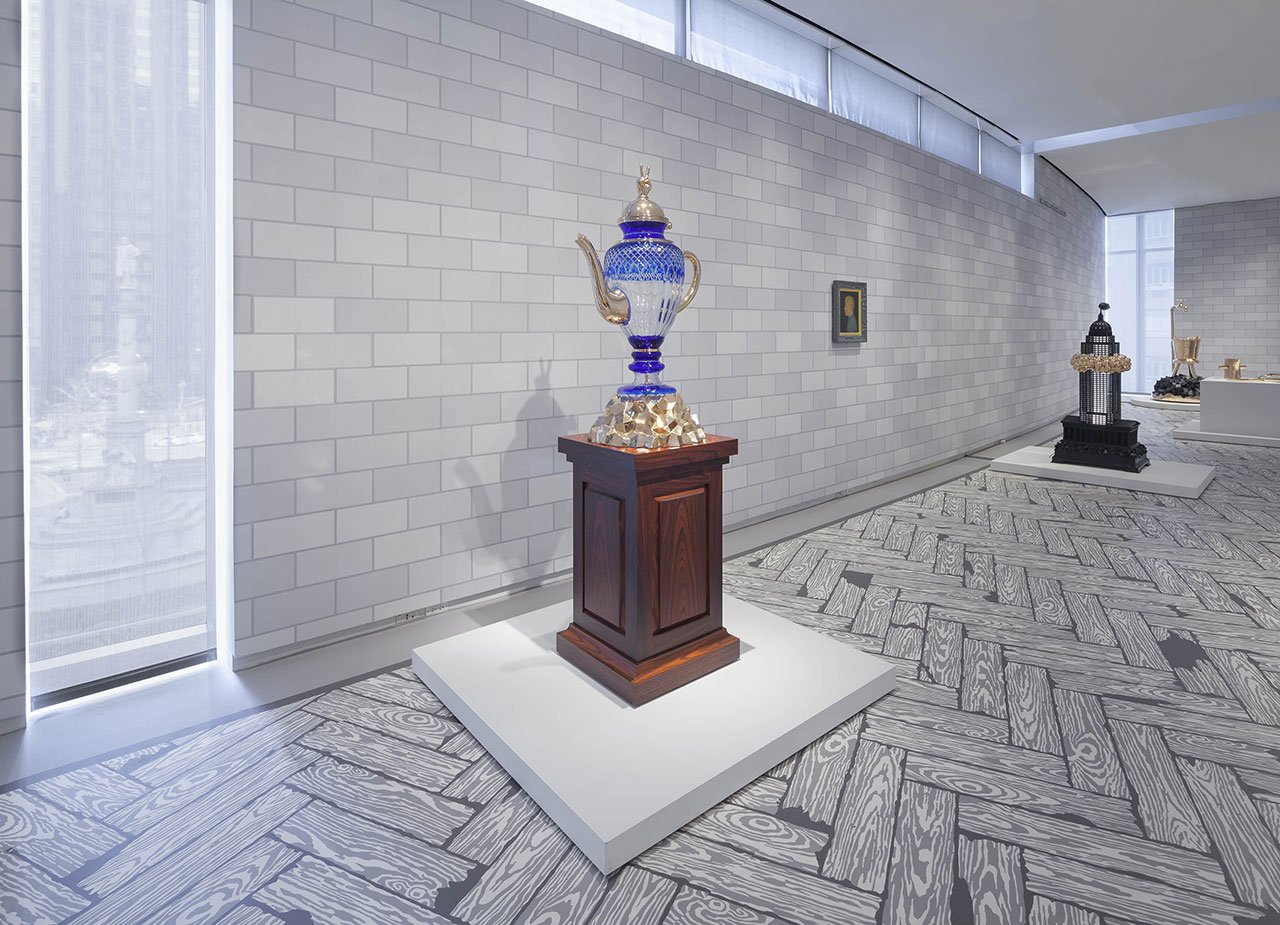
Studio Job MAD HOUSE Exhibition view. Photo by Butcher Walsh. Courtesy Museum of Arts and Design (MAD).
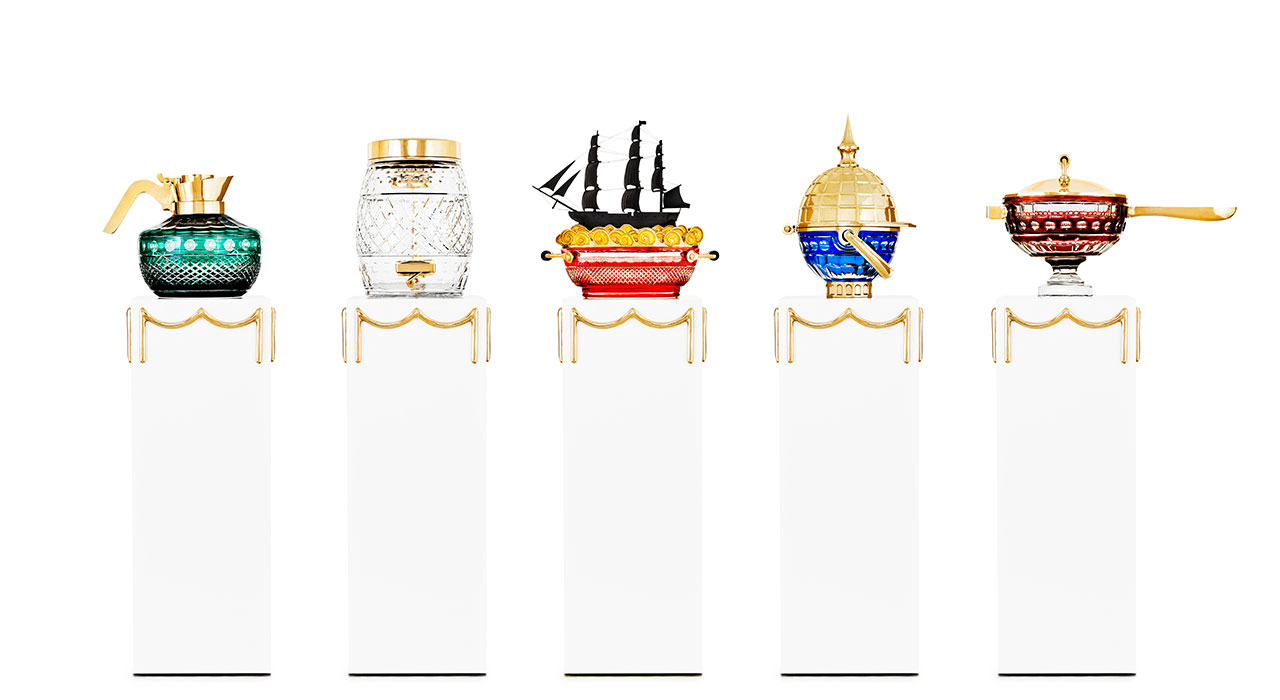
Containers II, 2010, Private collection. Photo by Robert Kot.
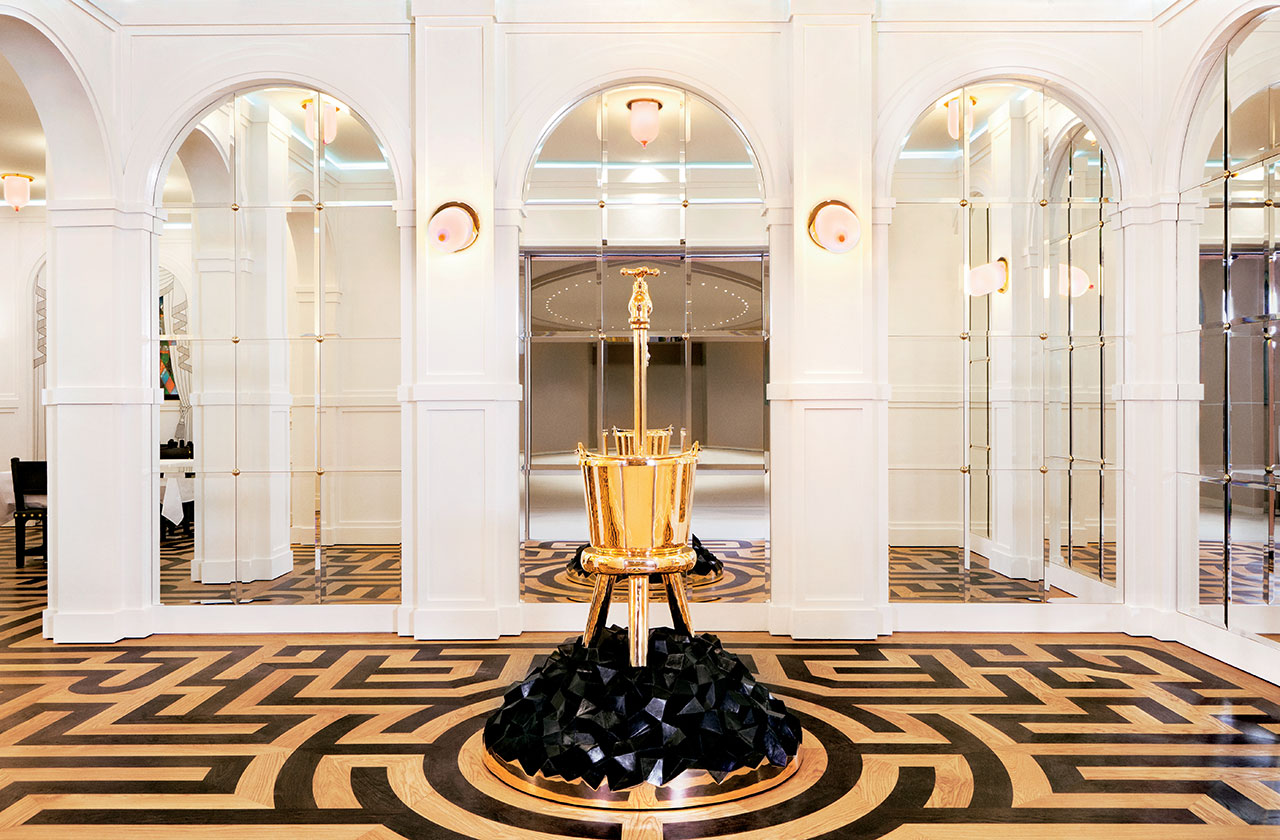
FOUNTAIN, 2011. Polished and patinated bronze, handblown glass, electrical
components, water. Installation view from Job Lounge at the Groninger Museum. Photo by Robert Kot.




